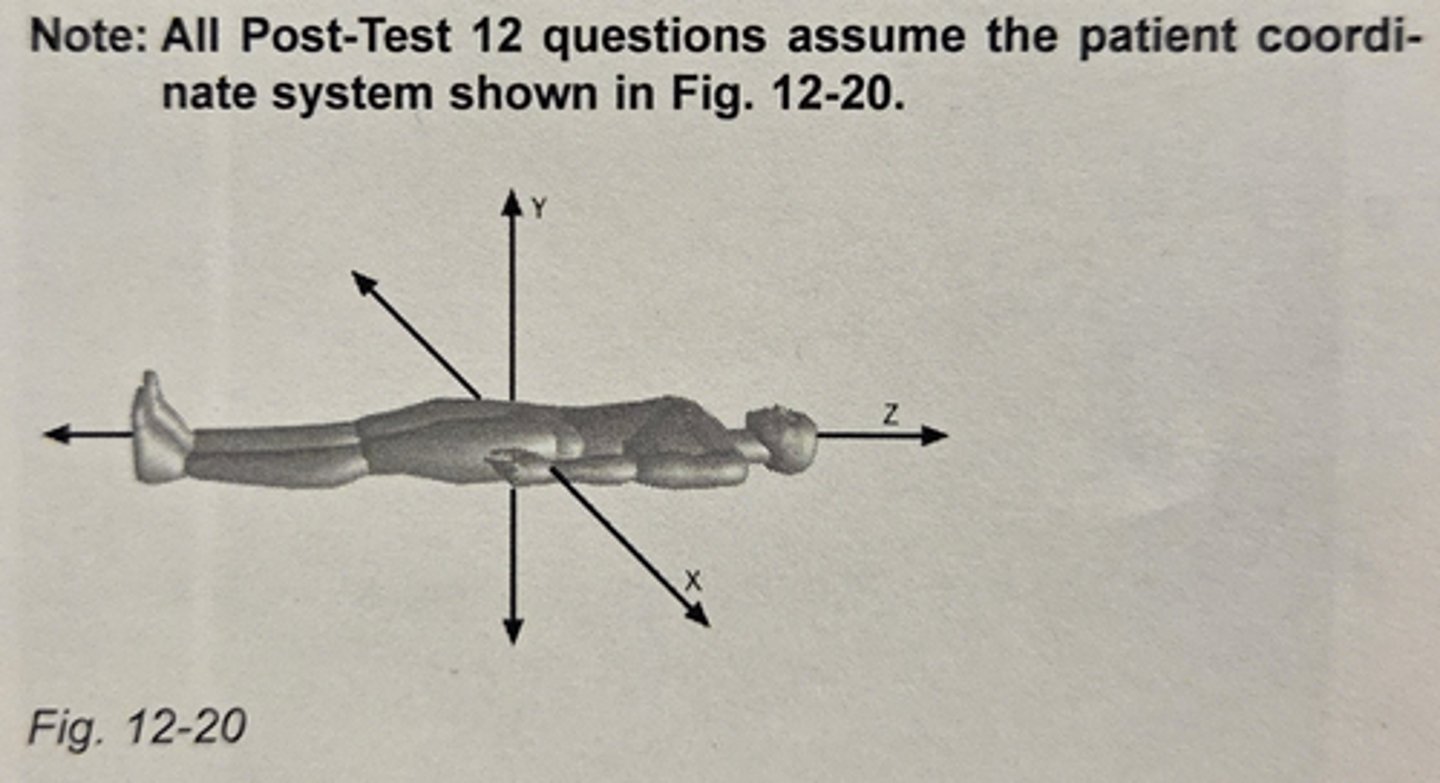Test 12: MRI Artifacts
1/39
There's no tags or description
Looks like no tags are added yet.
Name | Mastery | Learn | Test | Matching | Spaced |
|---|
No study sessions yet.
40 Terms
A ____________________ pulse sequence demonstrates the least amount of magnetic susceptibility artifact.
spin echo
3 multiple choice options
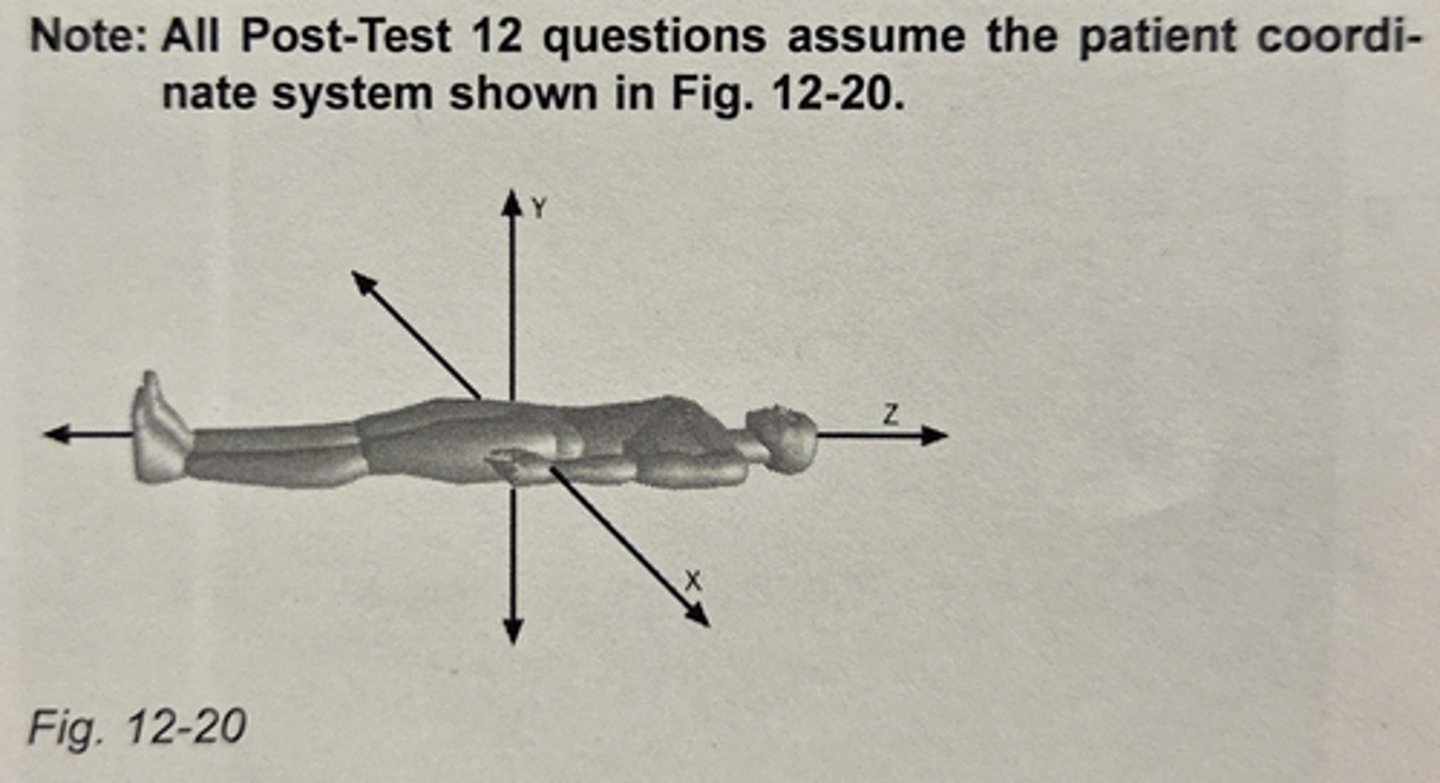
In which of the following directions may aliasing occur with a 3D volume acquisition?
1. slice select direction
2. readout direction
3. phase encoding direction
1, 2 & 3
3 multiple choice options
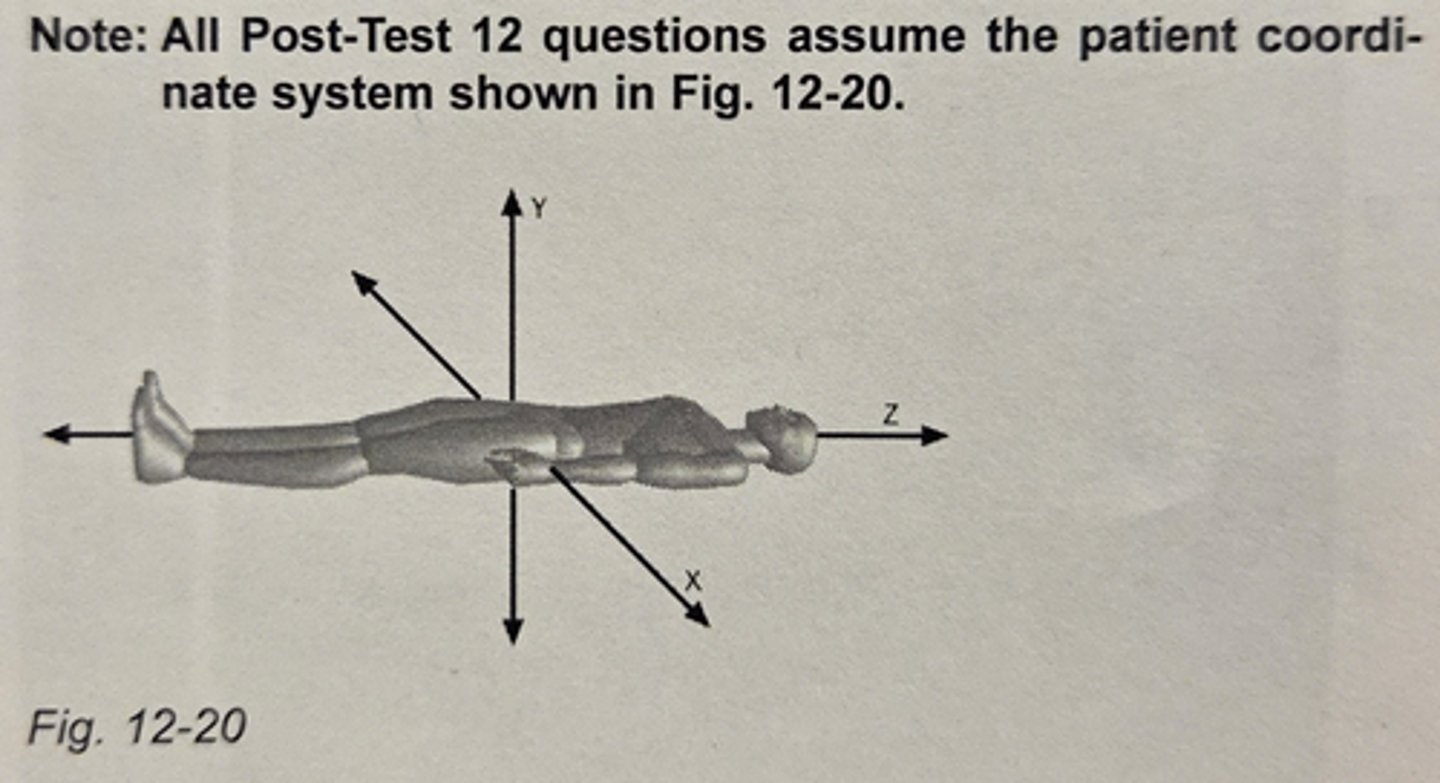
Which of the following is NOT a method that may reduce motion artifacts?
applying the no frequency wrap option
3 multiple choice options
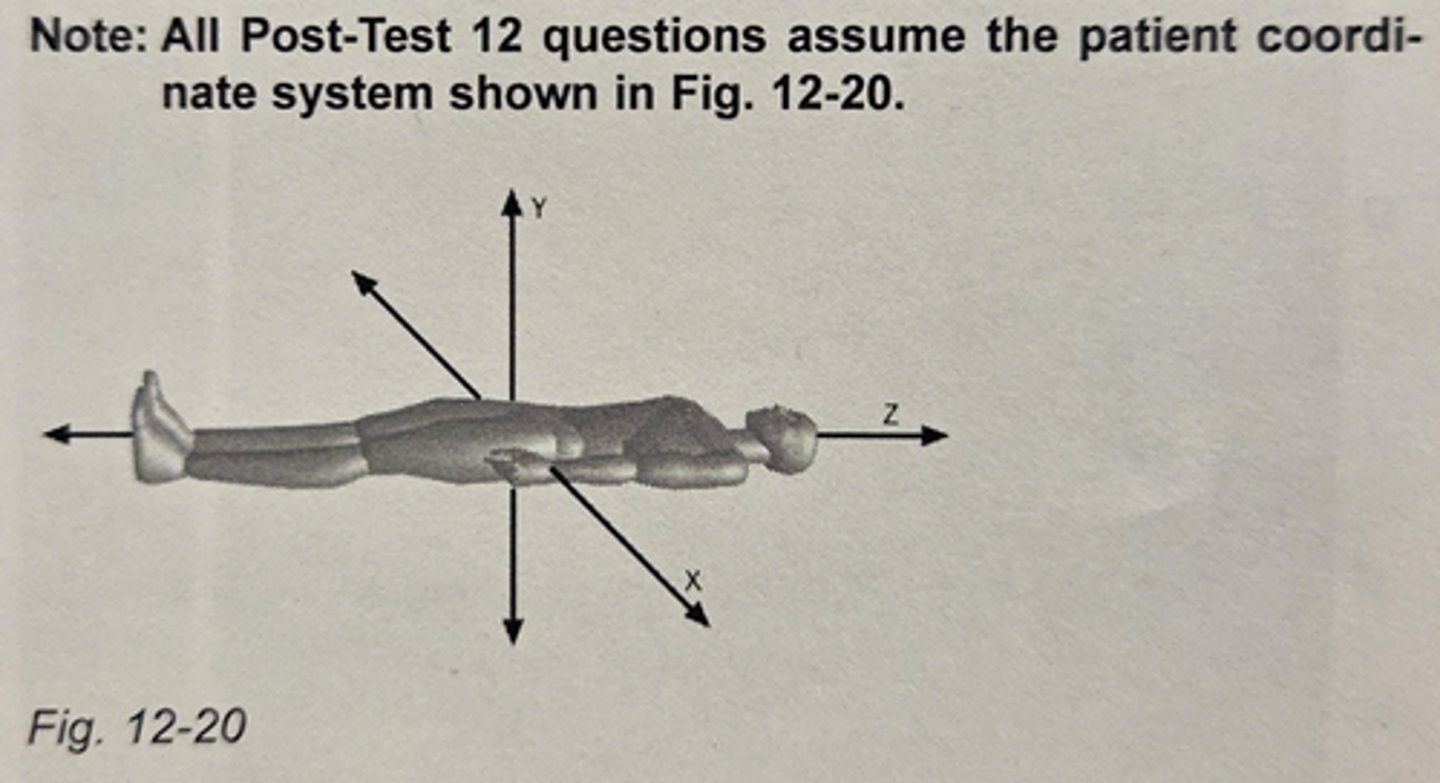
The scan time with the no frequency wrap option applied is __________ the scan time if the no frequency wrap option is not applied.
the same as
3 multiple choice options

_______________ pulse sequences display the effects of magnetic susceptibility.
Spoiled gradient echo
3 multiple choice options
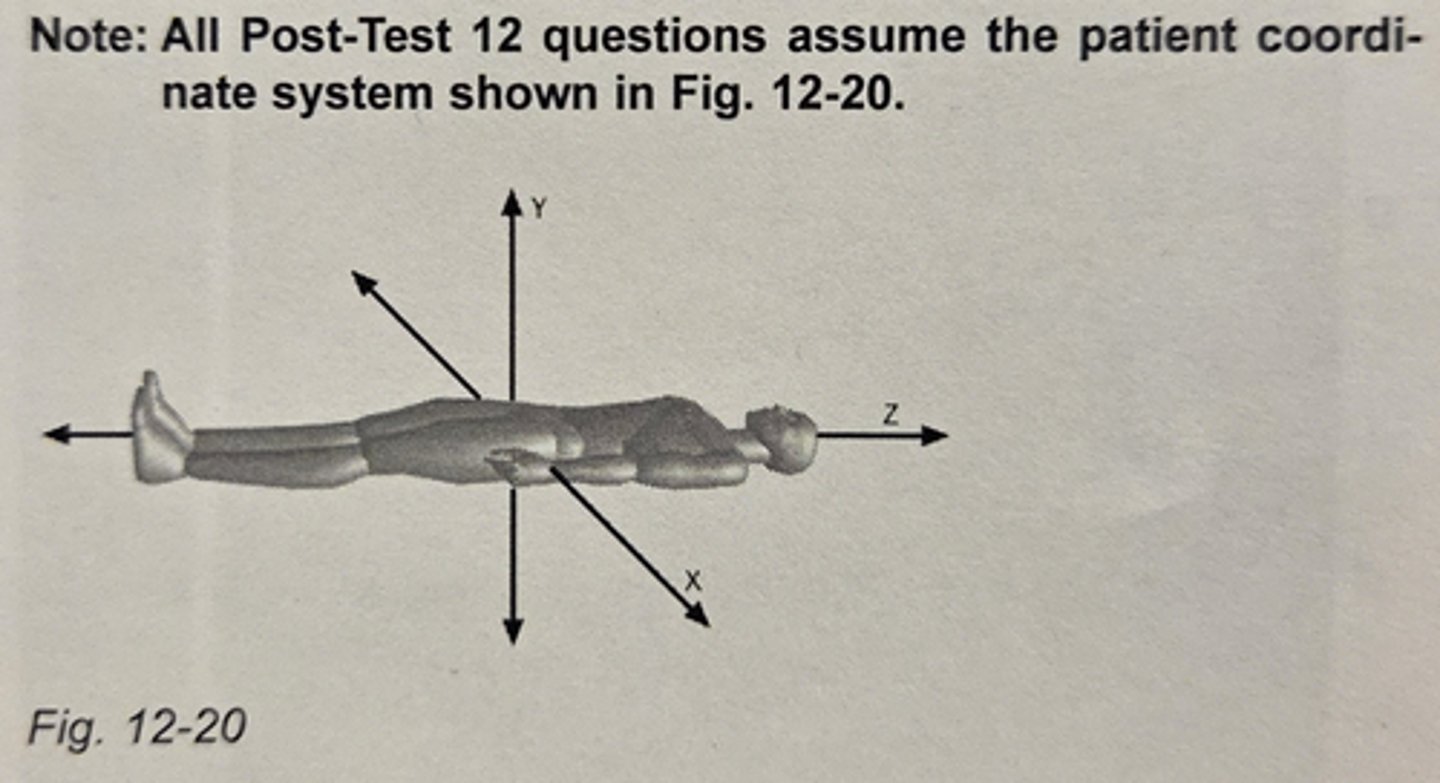
_______________ artifact may occur in the MR images as a direct result of acquiring them with the scan room door open.
RF
3 multiple choice options

How can fat suppression act as a motion reduction technique?
fat suppression reduces the signal from fatty tissues, and with a darker signal, the tissues will generate less motion artifact
3 multiple choice options
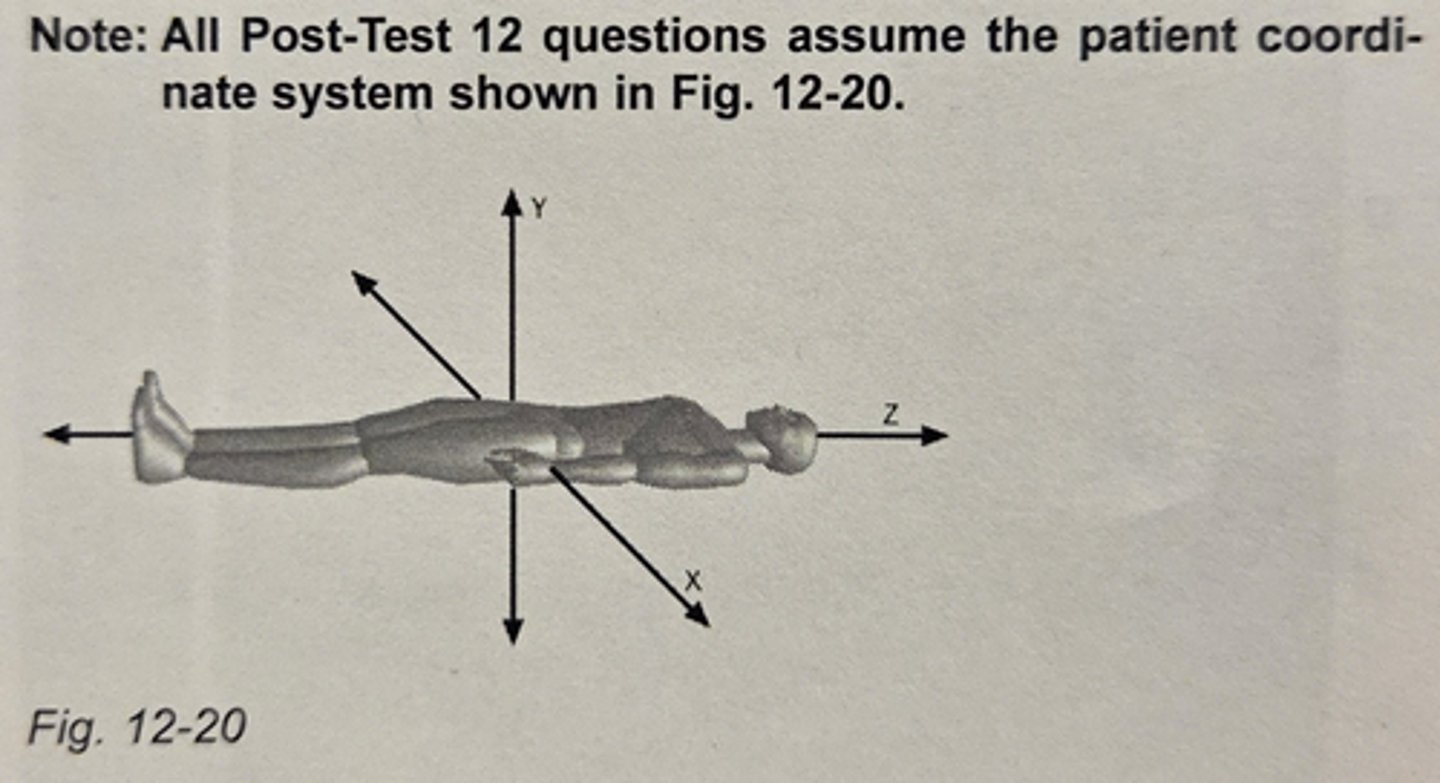
A patient was inadvertently allowed into the magnet with a metal zipper in his trousers. How will the images appear from this patient's routine brain study?
no metal artifact will appear in the images because the patient's zipper is not in the imaging region of interest
3 multiple choice options

The image arrows in Fig. 12-21 are pointing to an example of _________________ artifact.
chemical shift
3 multiple choice options
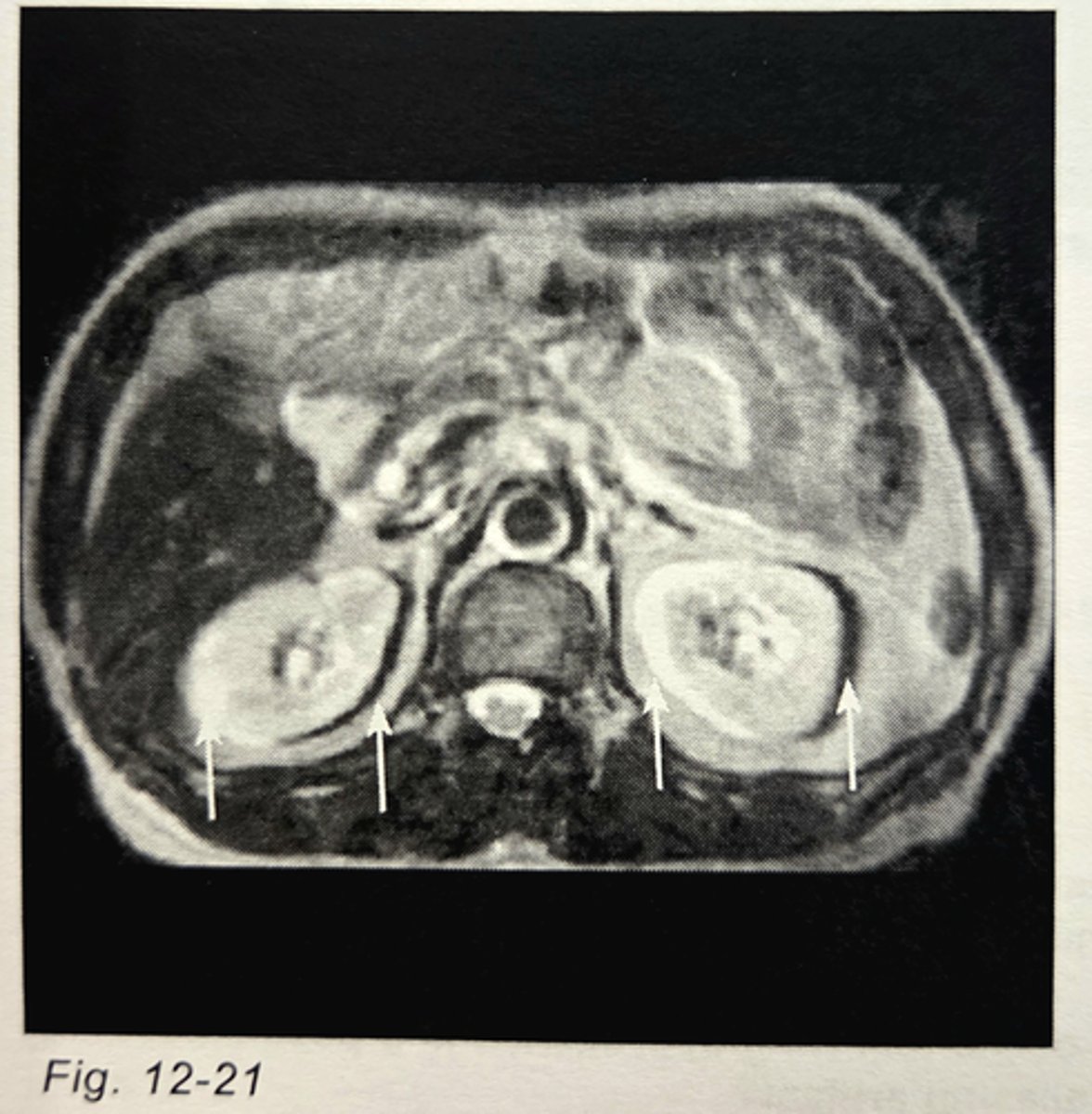
Which of the following is a method of reducing the artifact seen in Fig. 12-21?
increase the receiver bandwidth
3 multiple choice options
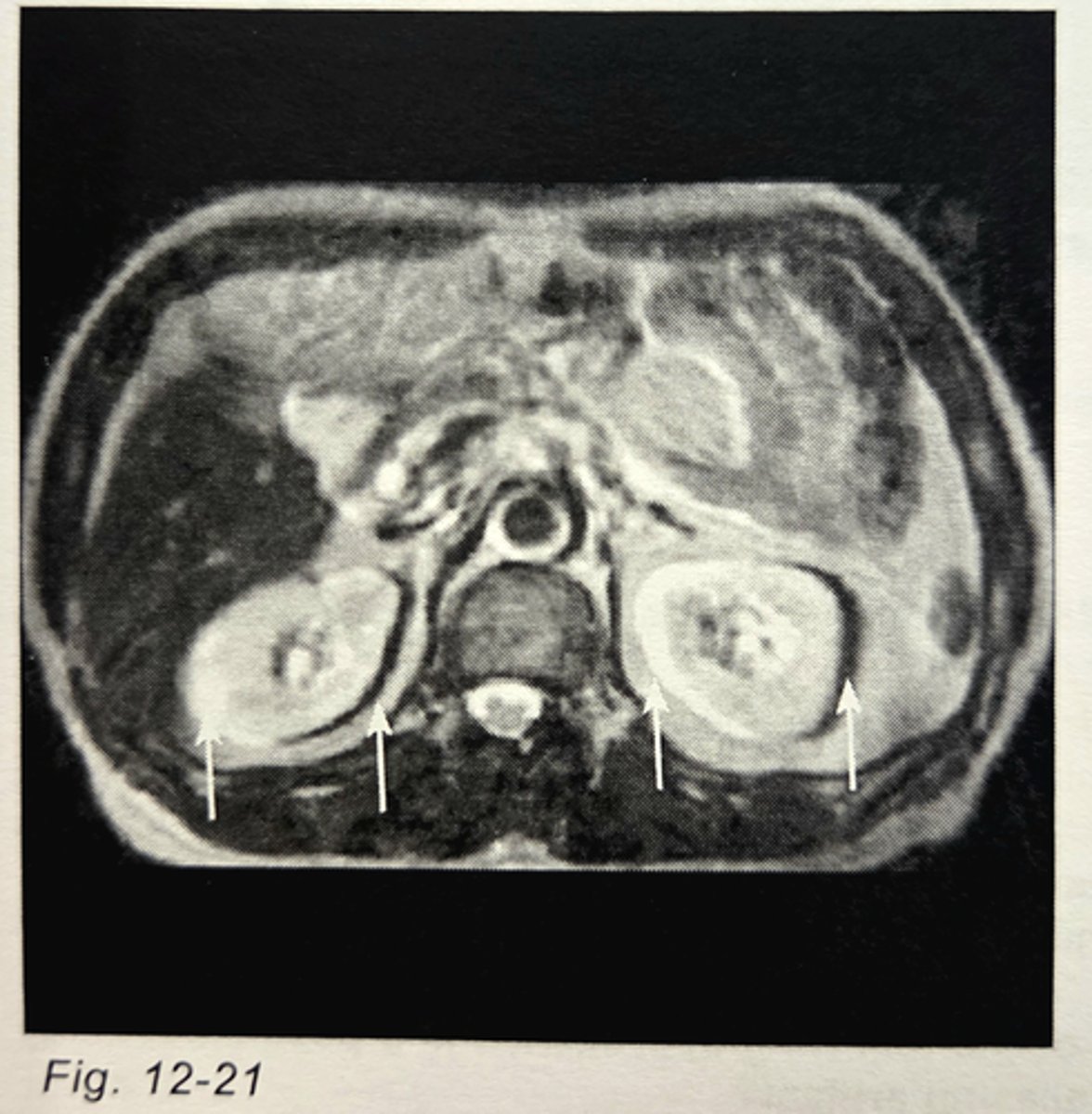
Which of the following physical gradients is used for phase encoding in Fig. 12-21 (assume the coordinate convention at the beginning of the post-test section)?
y-gradient
3 multiple choice options
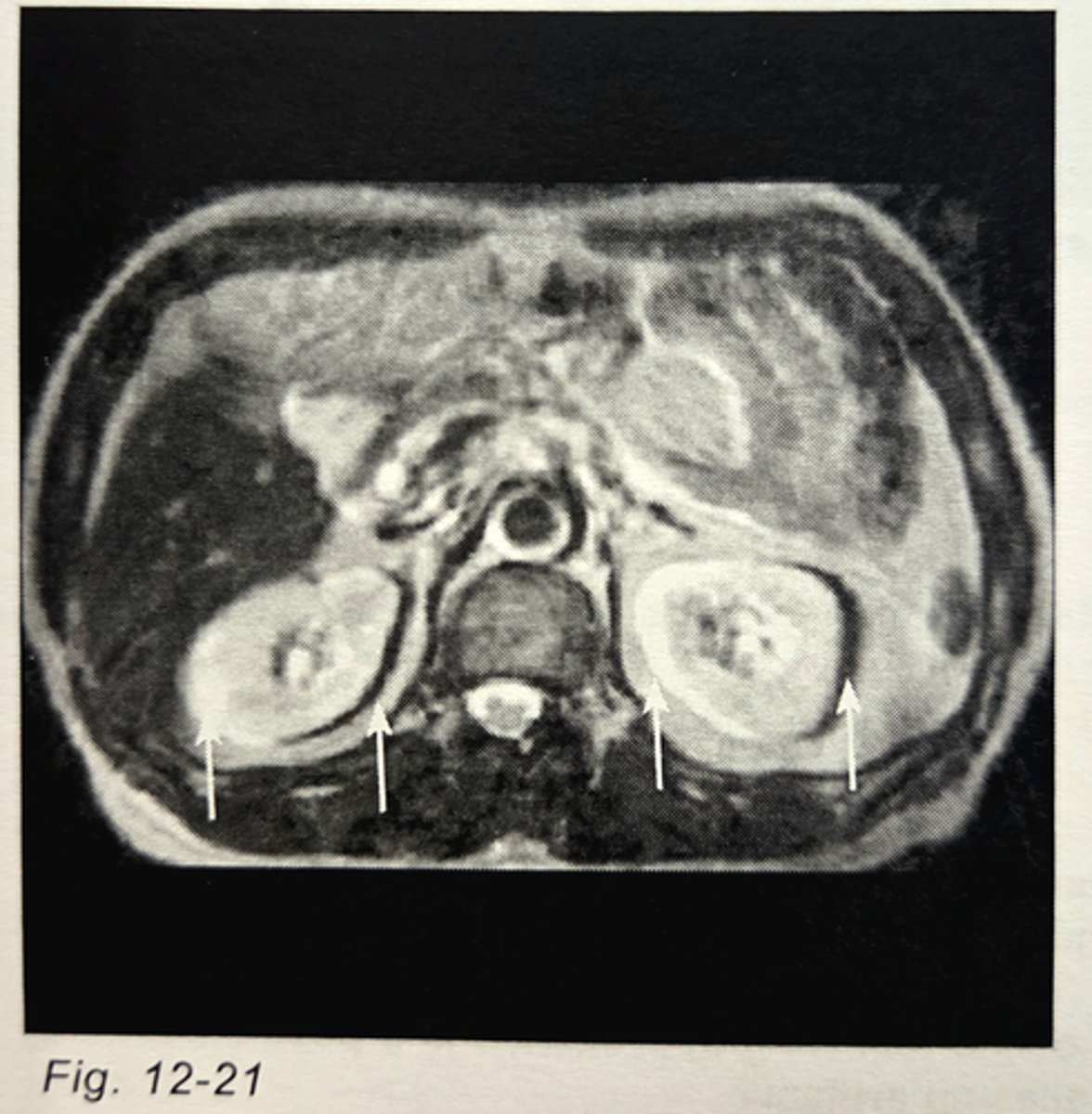
____________________ would NOT help to reduce the severity of flow artifacts in T2-weighted images of the brain:
A narrower receiver bandwidth
3 multiple choice options
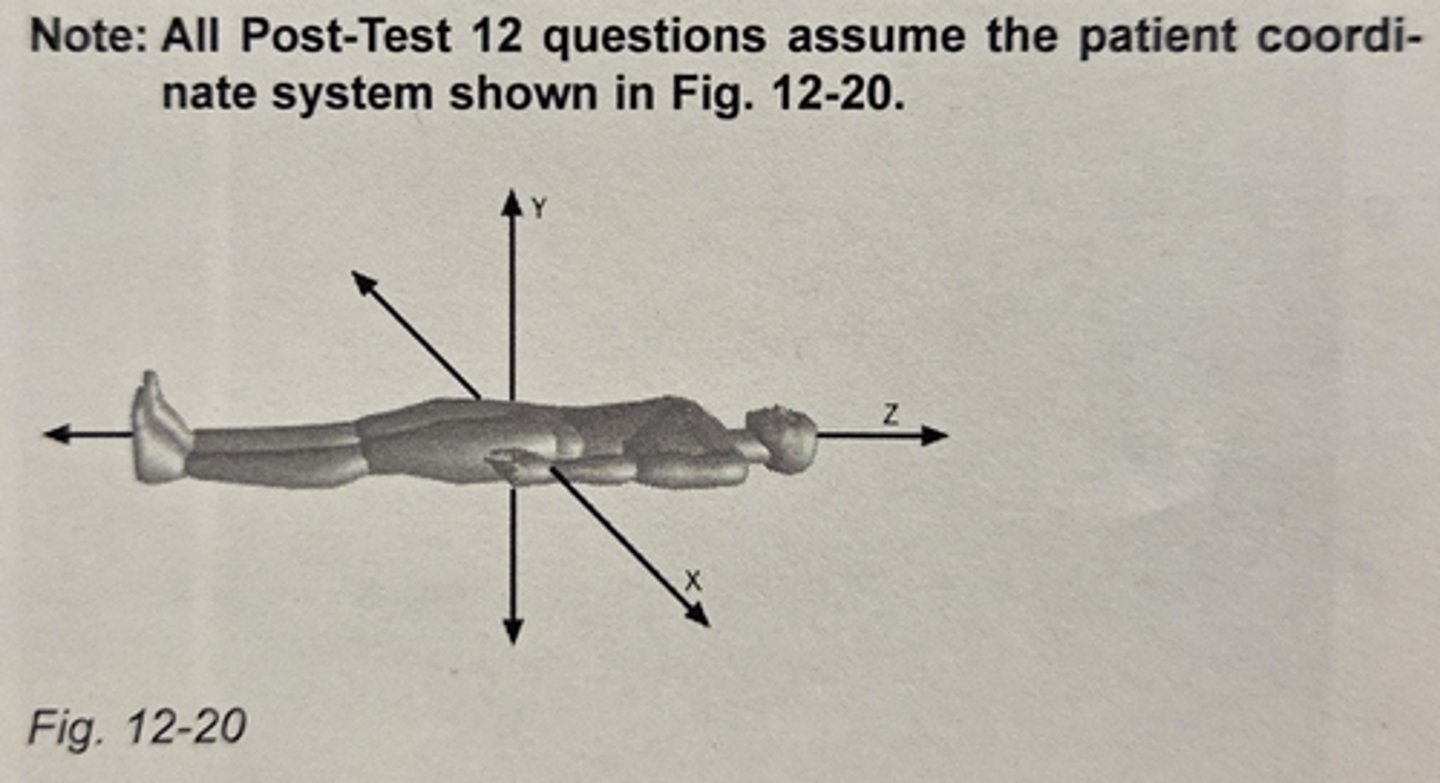
If the frequency and phase directions were swapped, but all other parameters remained constant, and the scan was repeated, the flow artifact in Fig. 12-22 would:
extend horizontally across the posterior aspect of the brain
3 multiple choice options
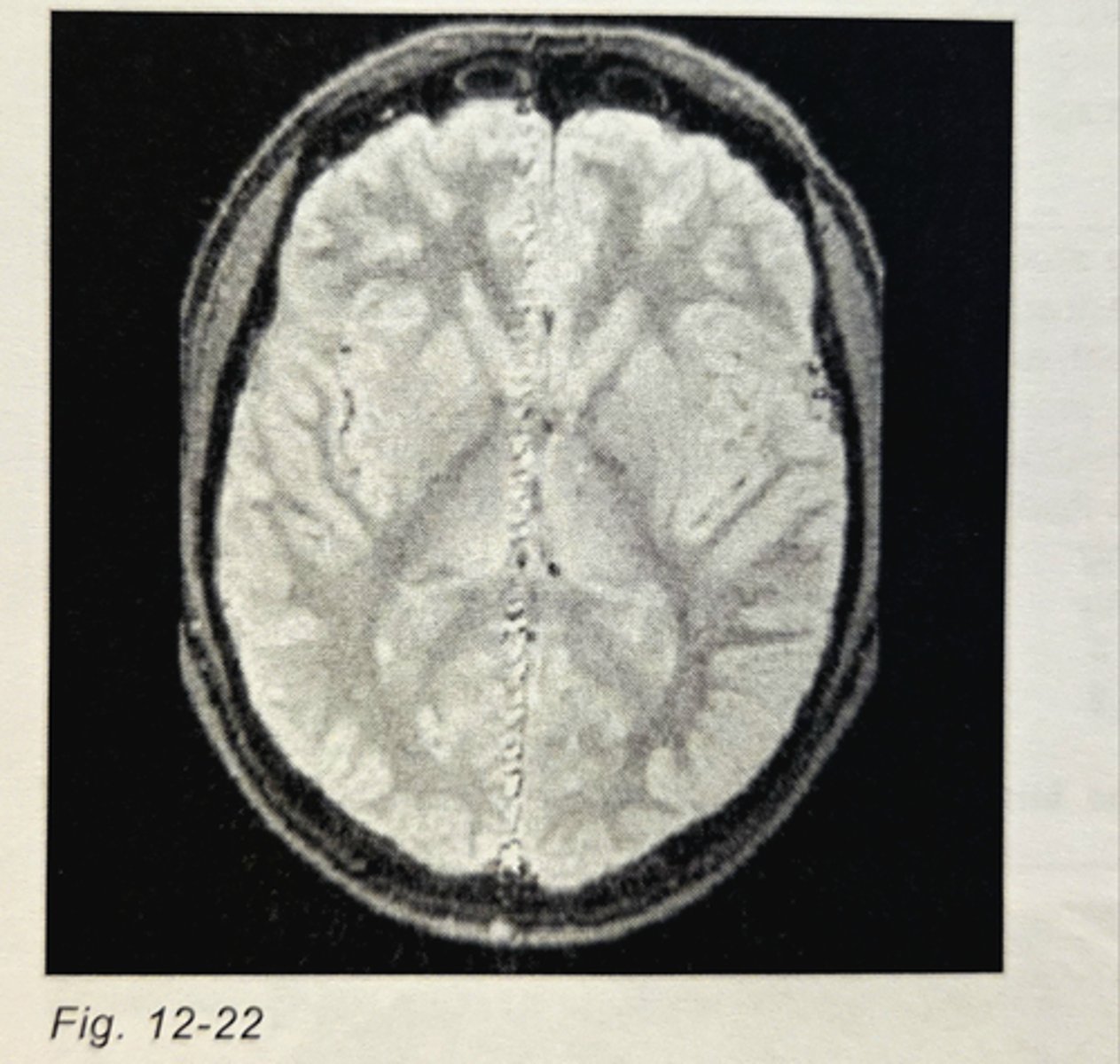
Which of the following is FALSE regarding magnetic susceptibility?
its effects are present in all MR images
3 multiple choice options
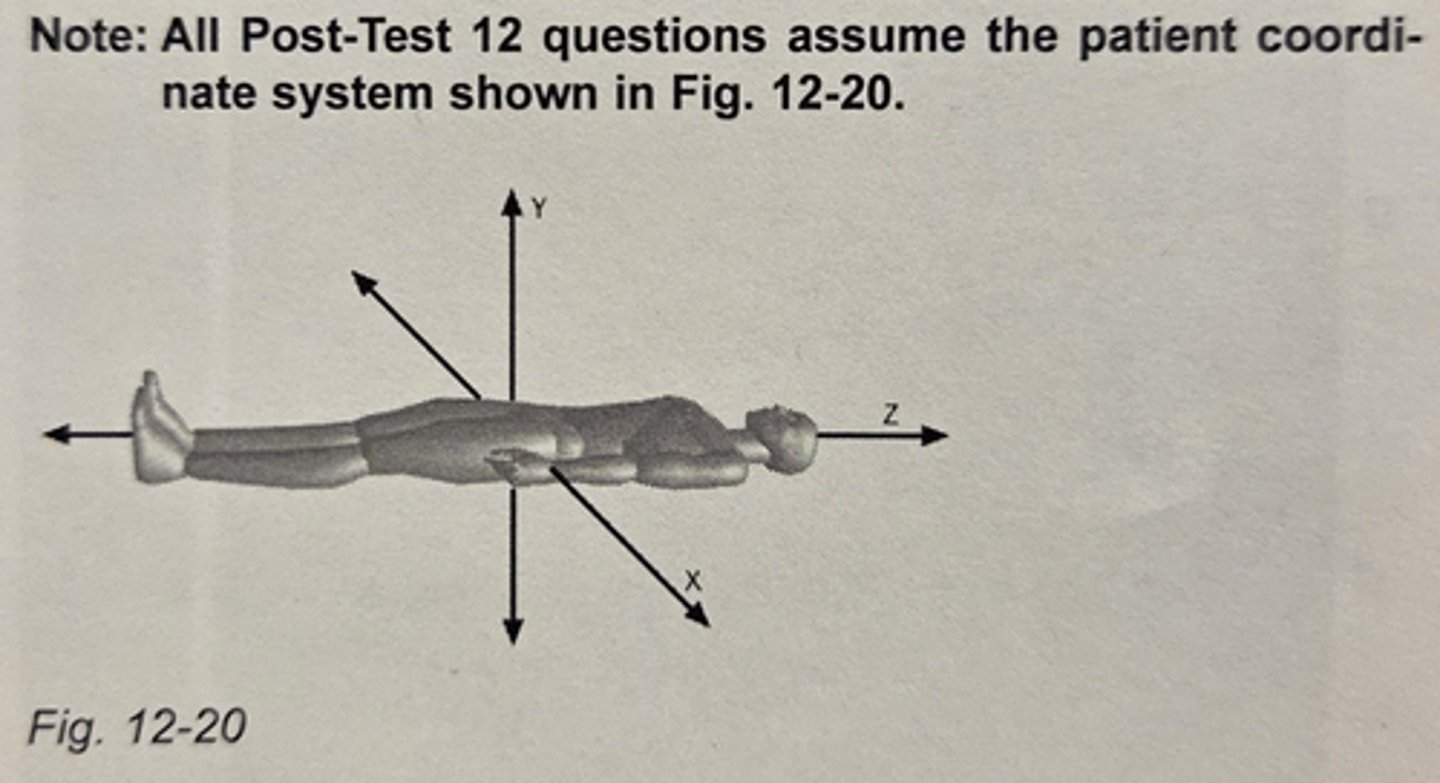
The dark pixel intensity that results from a chemical shift artifact arises from:
a signal void which is caused by a signal mismapping along the frequency encoding direction of the image
3 multiple choice options
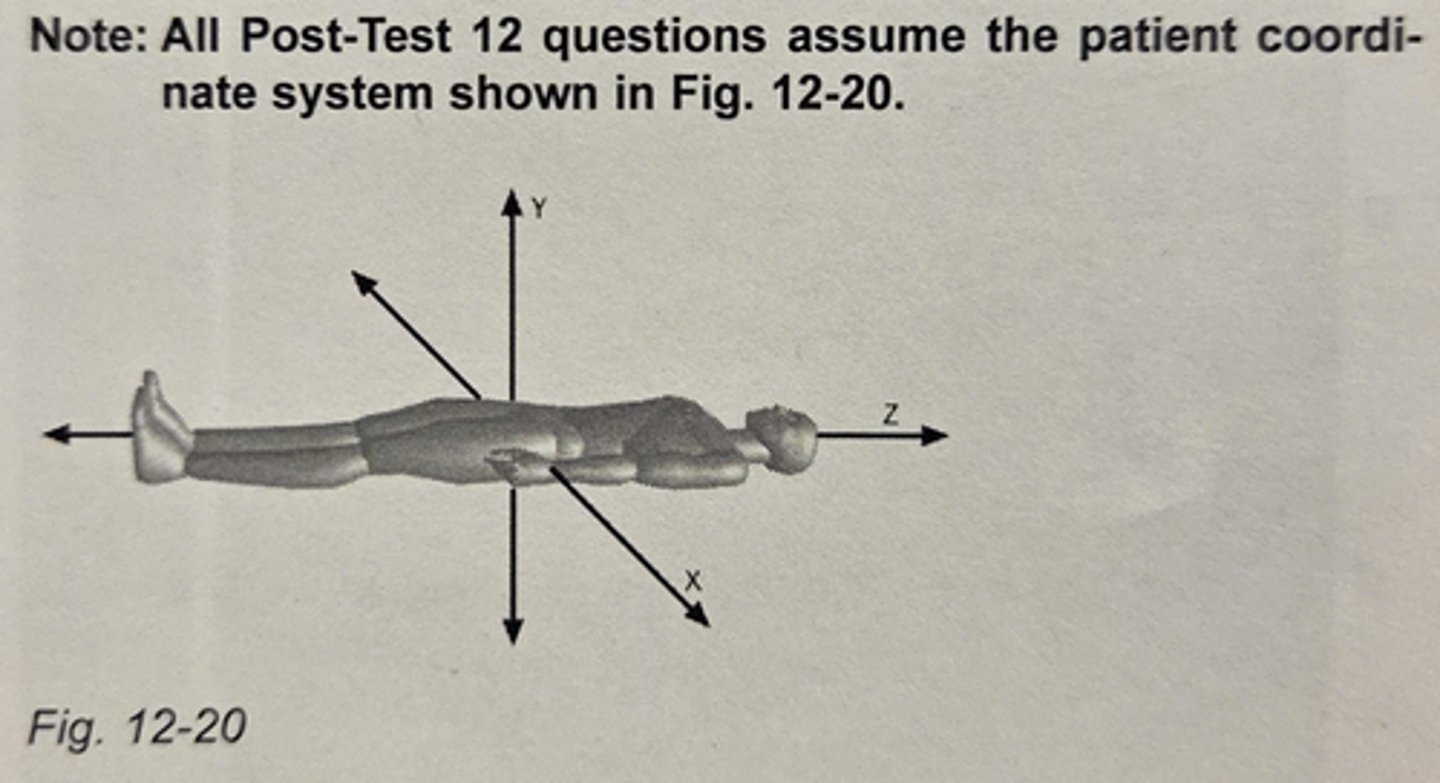
An MRI artifact is:
an anomaly in an MR image
3 multiple choice options
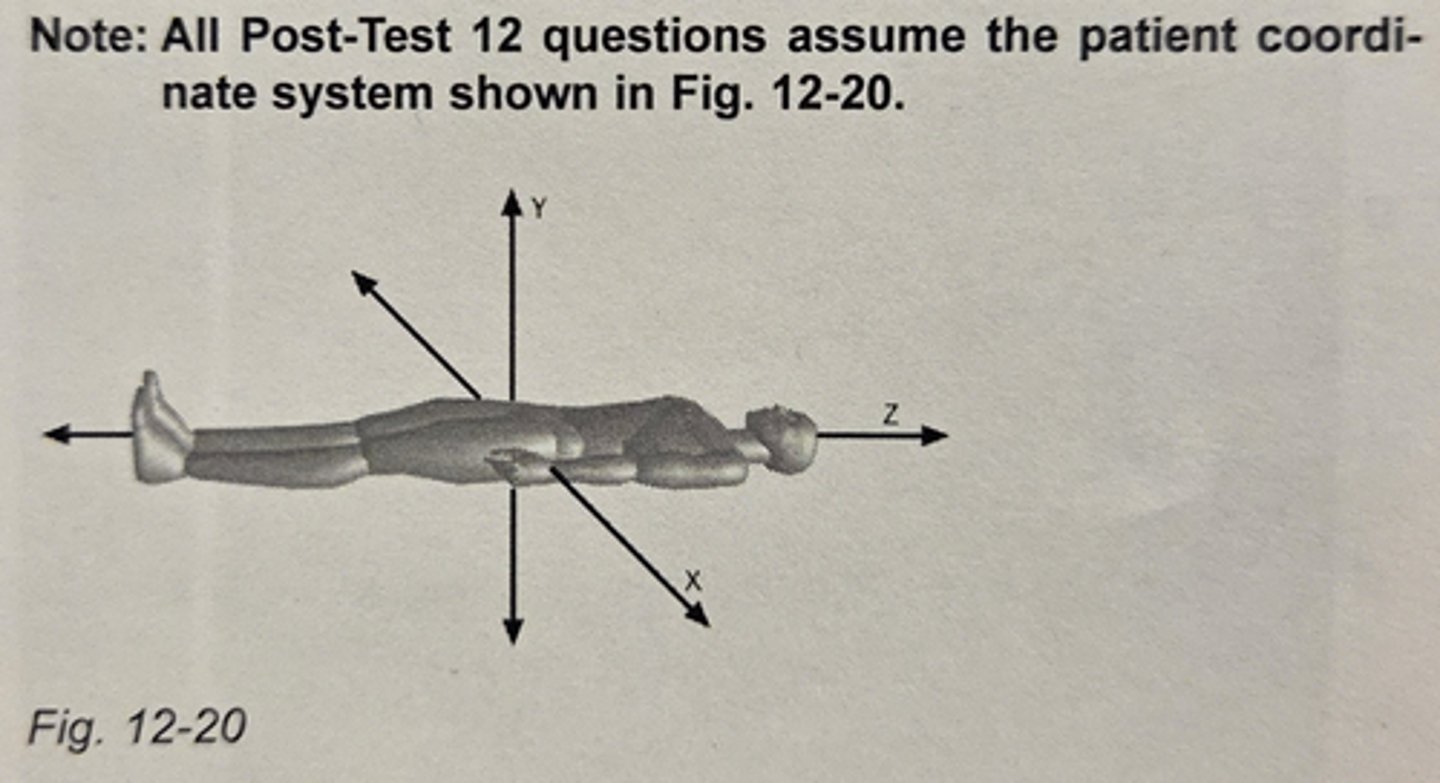
A patient's knee is 14 cm wide. A 100 mm sagittal volume is centered on the knee with each image having an effective slice thickness of 2 mm. What can be expected on the resulting images if both the no phase wrap and the no frequency wrap options are selected (and no other automatic system intervention occurs)?
the first few and last few sagittal slices will display aliasing artifact
3 multiple choice options
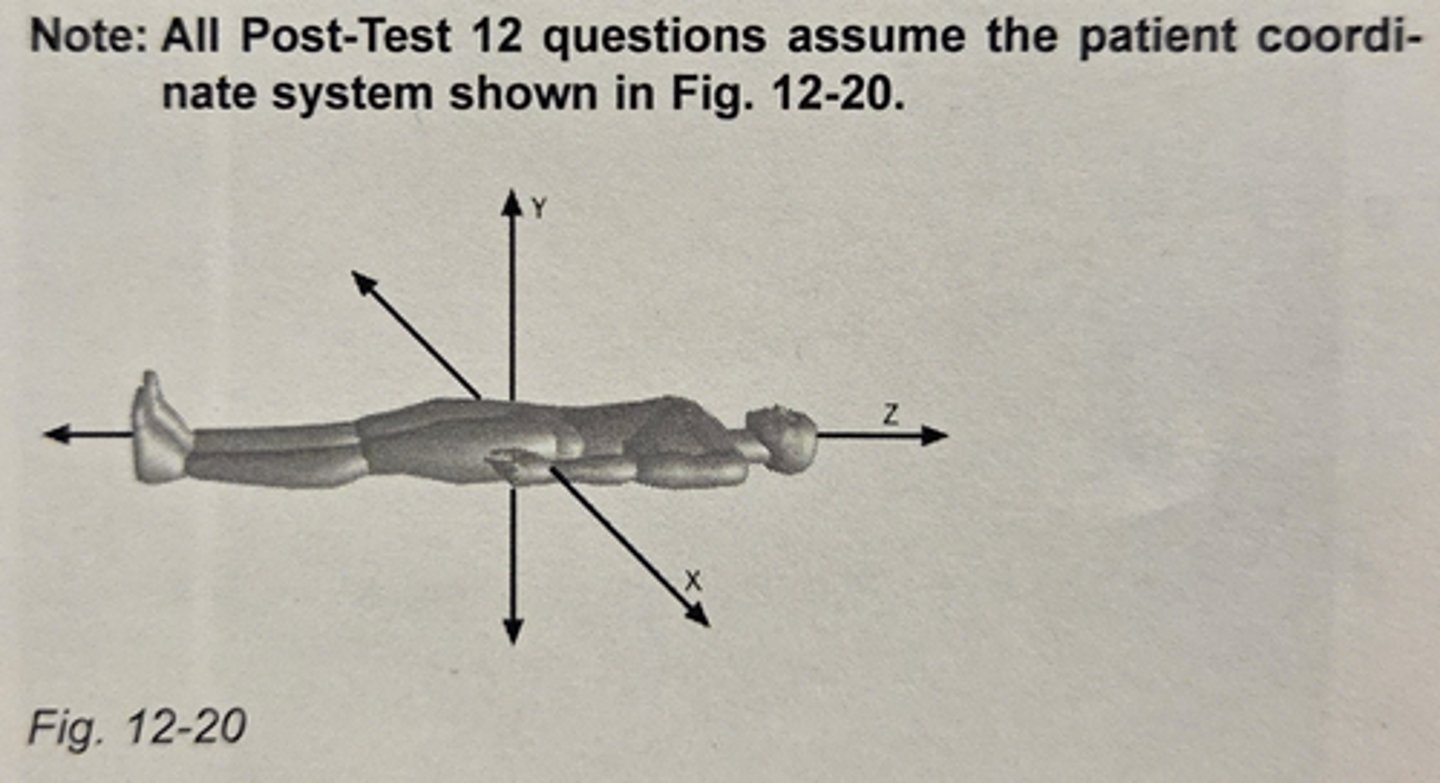
__________ will eliminate the wraparound artifact from the top and bottom of a coronal knee image (assuming that the frequency encoding is accomplished with the z-gradient, and using the coordinate axis convention above).
1. Increasing the field-of-view
2. Applying the no frequency wrap option
3. Applying a single saturation region
2 only
3 multiple choice options
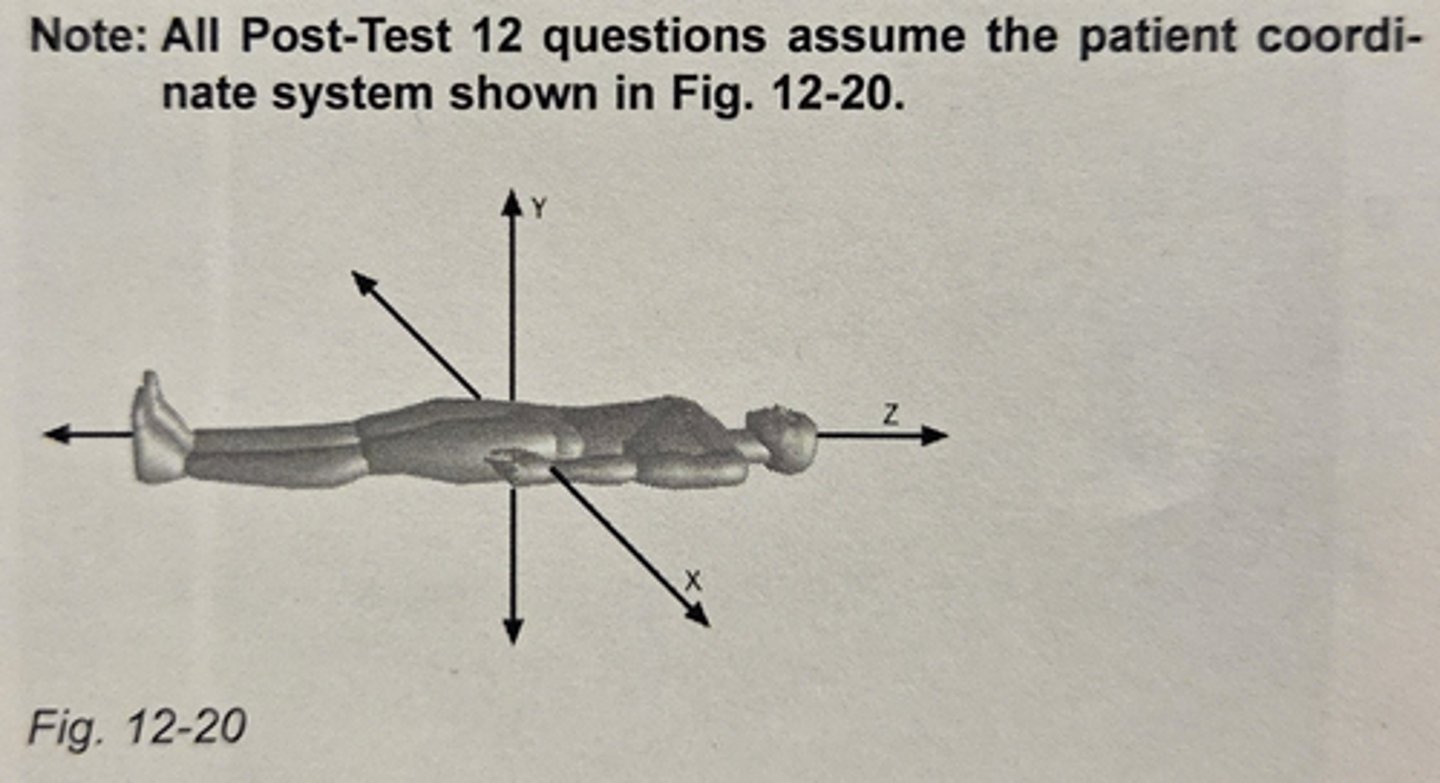
The image in Fig. 12-23 demonstrates an example of __________ artifact?
aliasing
3 multiple choice options
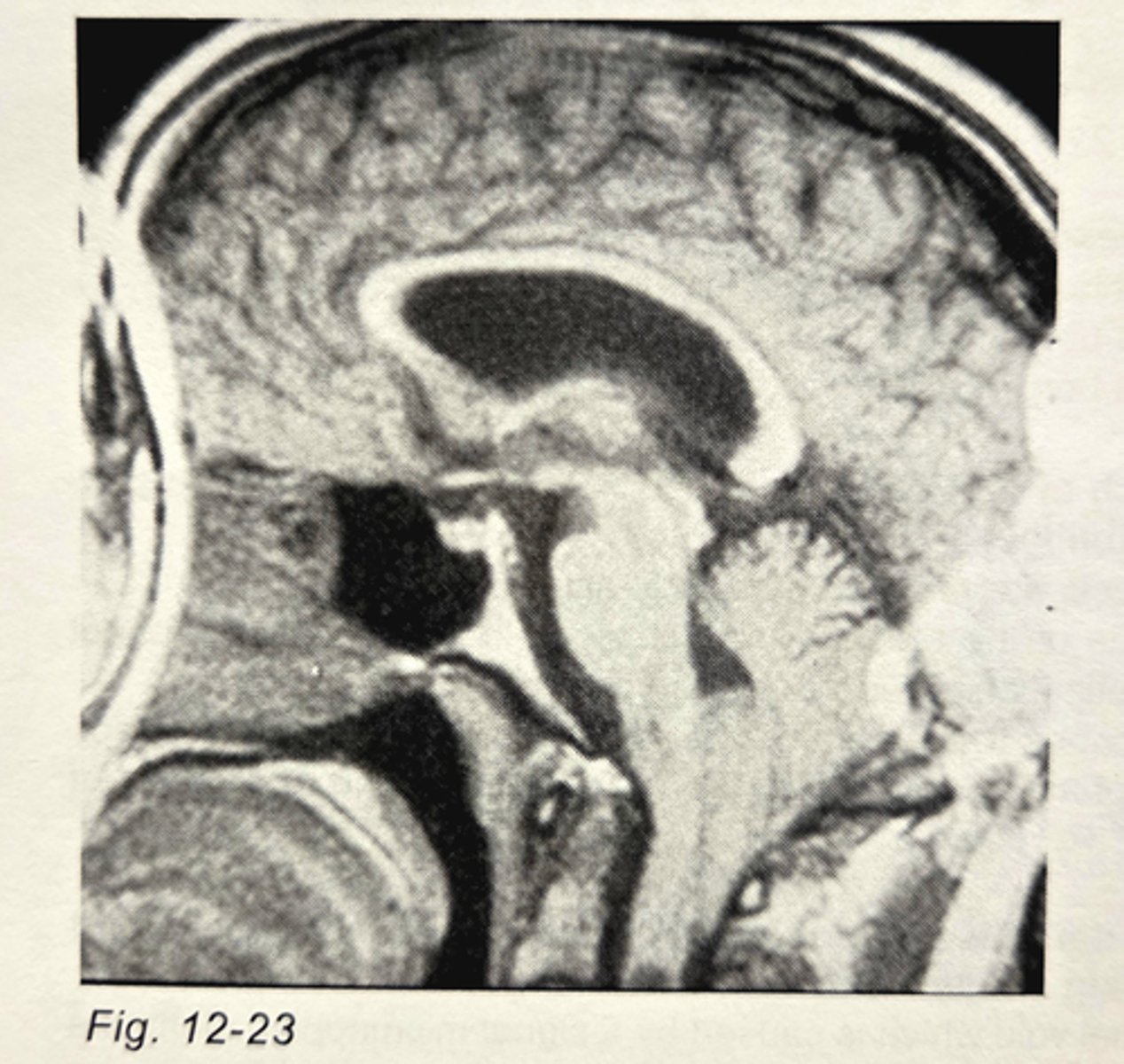
If phase encoding was accomplished with the z-gradient, which of the following could eliminate the artifact from the image in Fig. 12-23 (assume the coordinate convention at the beginning of the post-test section)?
no frequency wrap option
3 multiple choice options
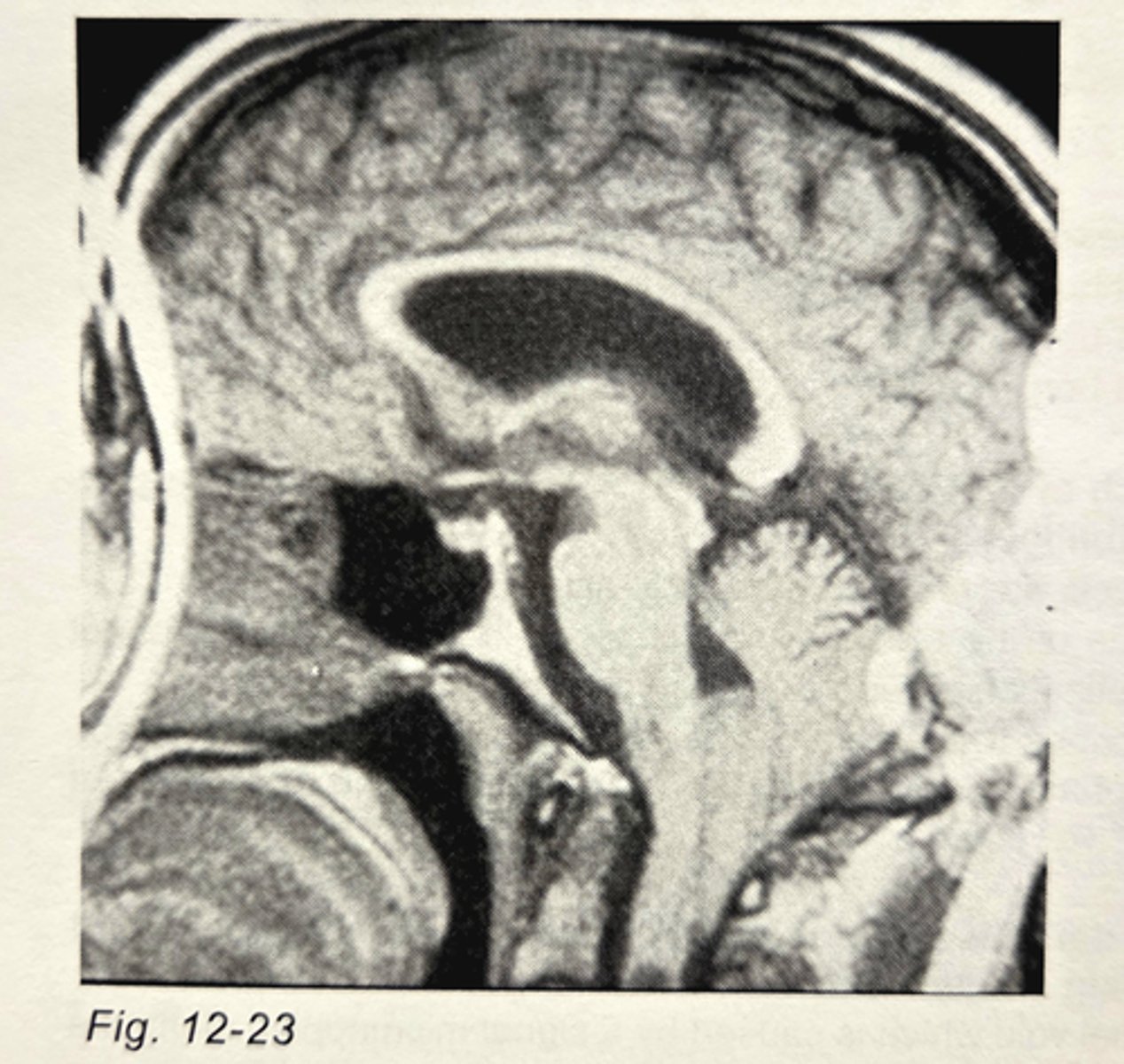
A 10 mm slice will experience __________ partial volume artifact, compared to a 5 mm slice.
more
3 multiple choice options
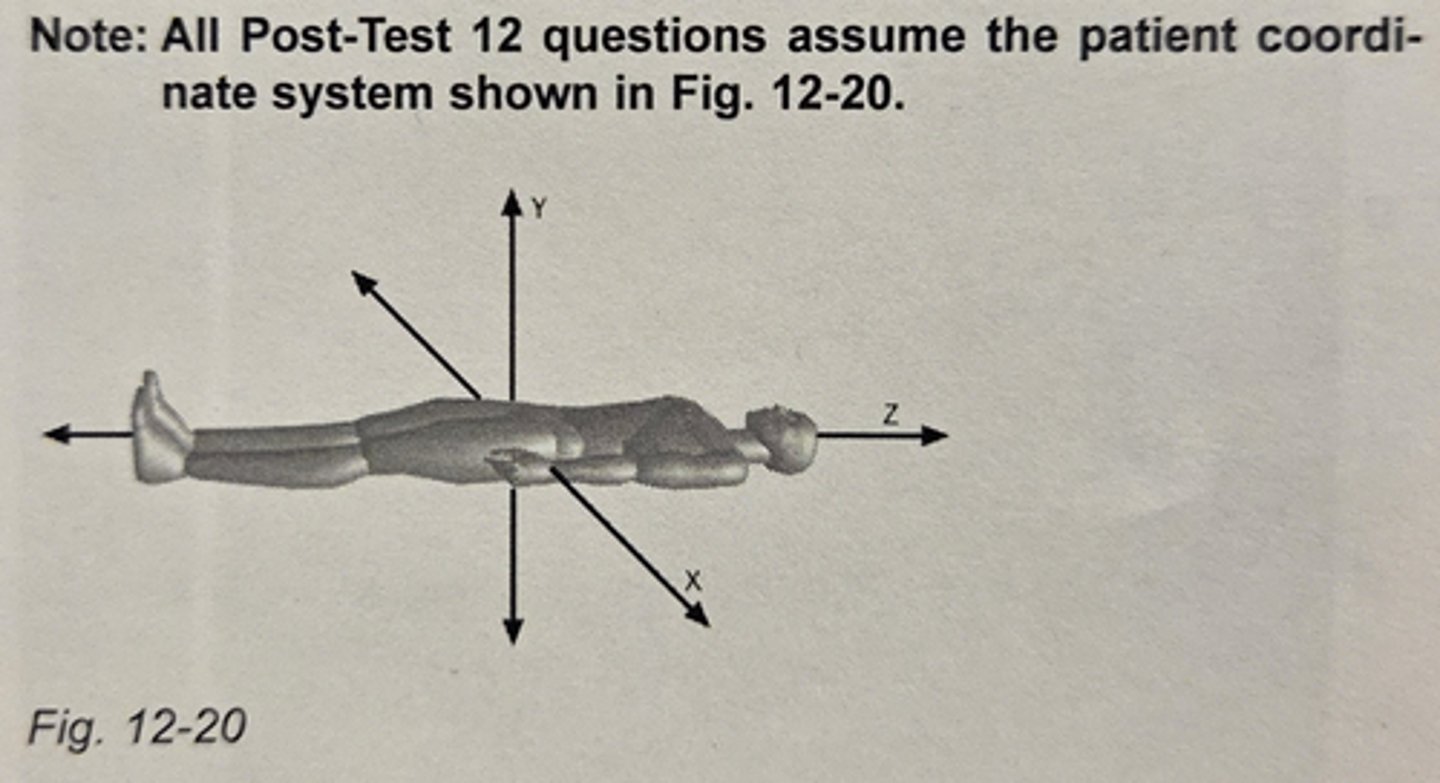
_______________ artifact is evident in the patient's left knee in Fig. 12-24.
Metal
3 multiple choice options
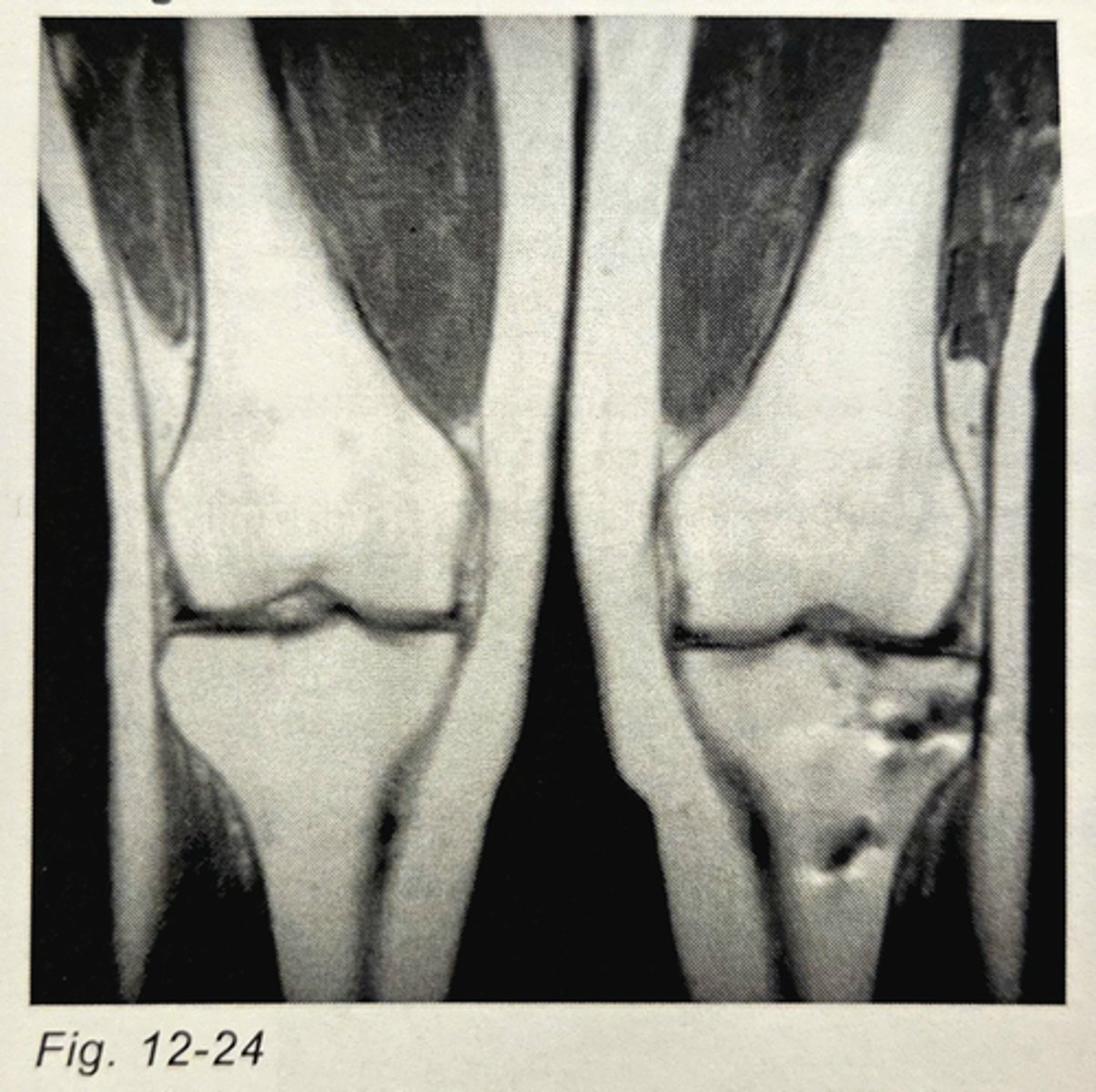
The artifact in the conventional spin echo image in Fig. 12-24 can:
not be eliminated, since it is caused by metal bone pins
3 multiple choice options
Which of the following approaches is a possible remedy for an aliasing artifact?
1. increase the field-of-view
2. apply no phase wrap option
3. apply a saturation pulse
1, 2 & 3
3 multiple choice options
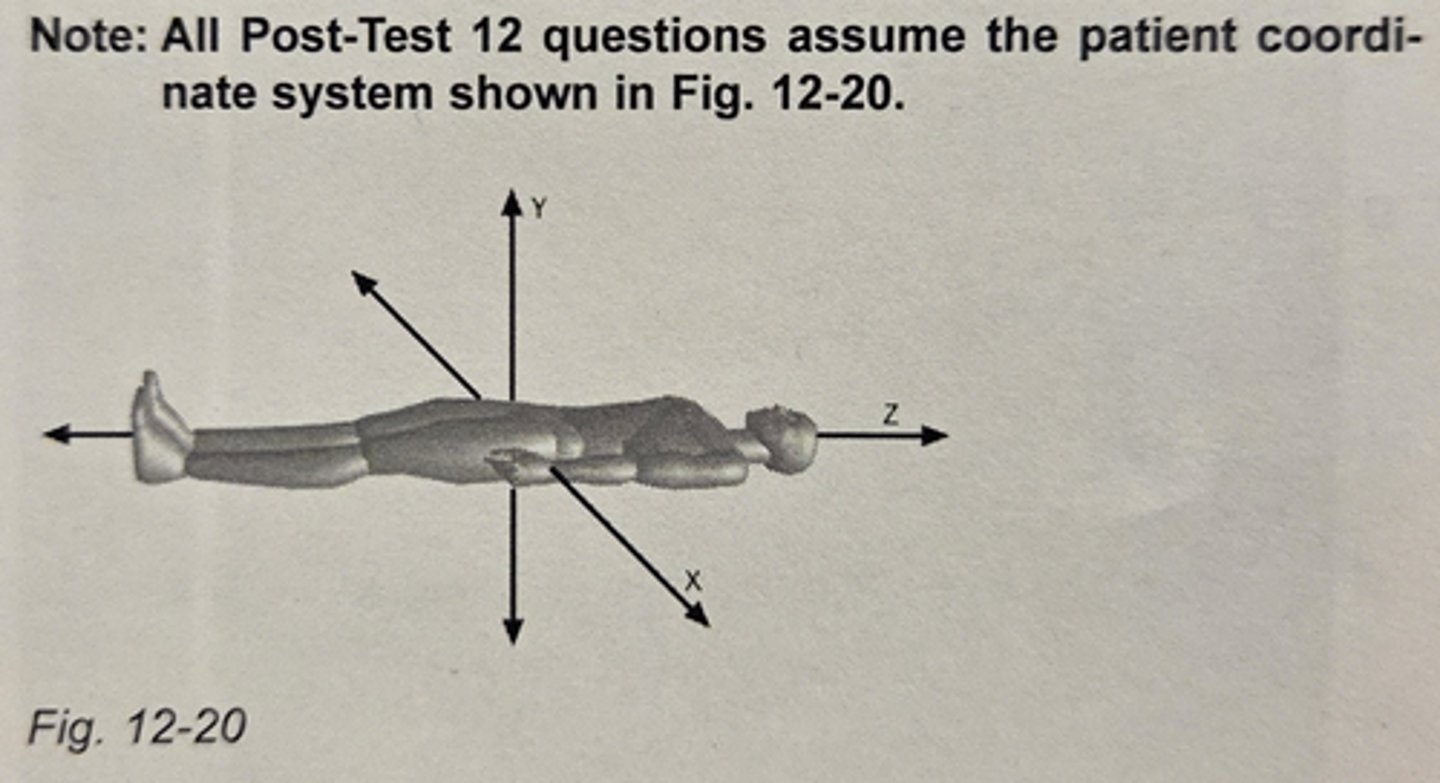
With a 2D pulse sequence, aliasing artifact does NOT occur:
1. if both the no phase wrap and no frequency wrap options are selected simultaneously
2. if there is no signal received from anatomy outside the field-of-view
3. in the slice direction
1, 2 & 3
3 multiple choice options
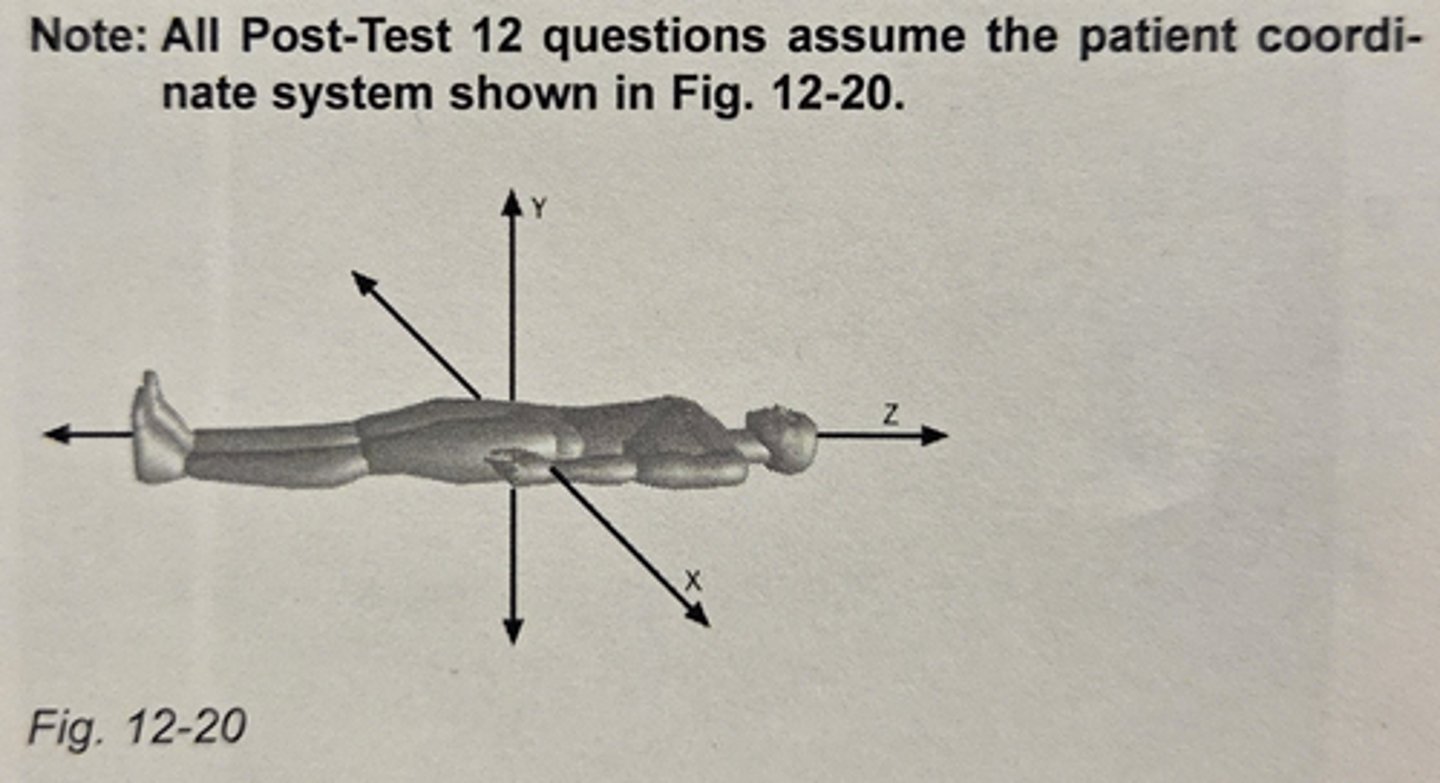
Which of the following is FALSE regarding a metal artifact in an MR image?
a metal artifact may appear as a scattering of RF energy, while all of the signal from the anatomical structures remain intact
3 multiple choice options
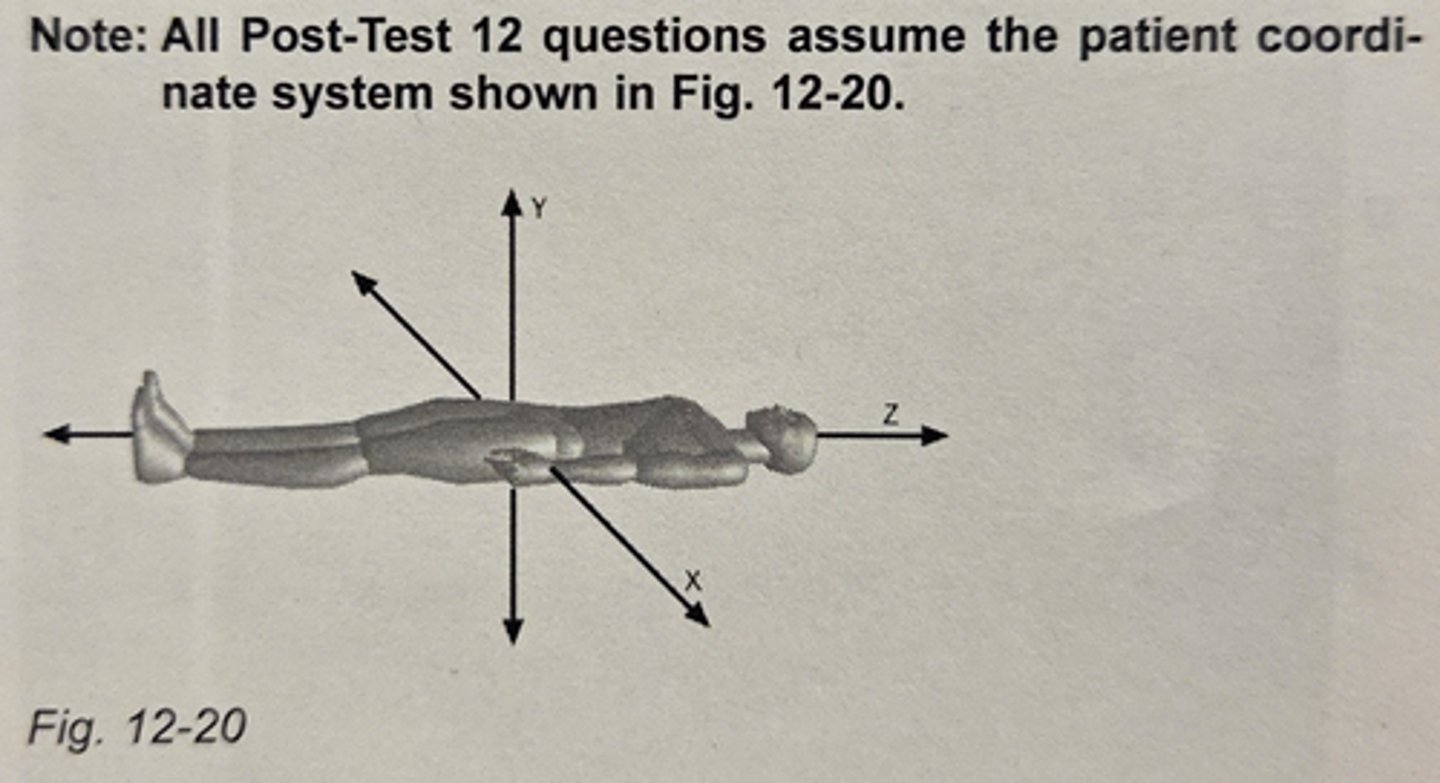
Which of the following is a method of reducing chemical shift artifact in MR images?
use a wider receiver bandwidth
3 multiple choice options
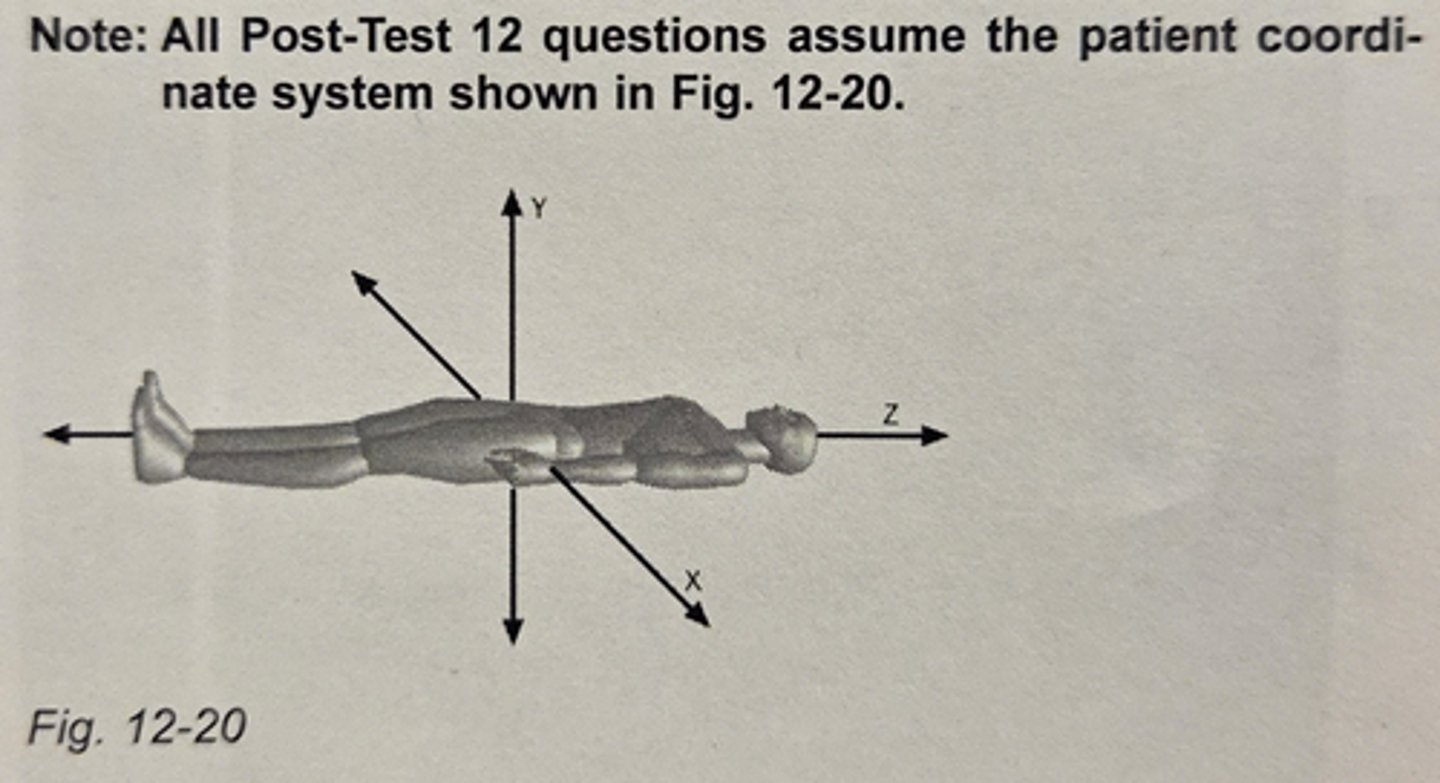
Chemical shift artifact occurs at the interface between two tissues:
whose protons experience different resonant frequencies
3 multiple choice options
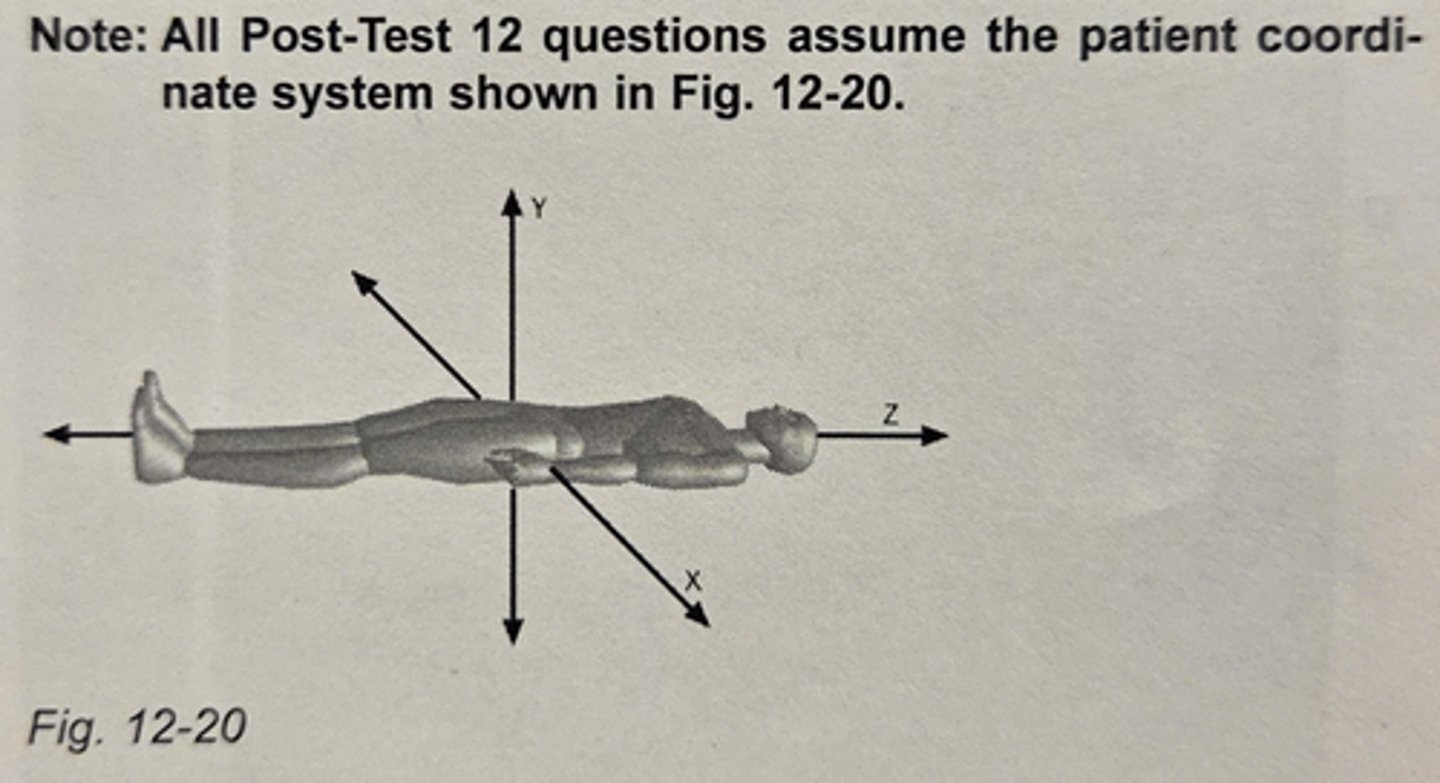
Which of the following is a result of reducing the slice thickness to reduce partial volume effects?
1. decreased signal-to-noise ratio
2. increased spatial resolution
3. decreased anatomical coverage with the same number of slices
1, 2 & 3
3 multiple choice options
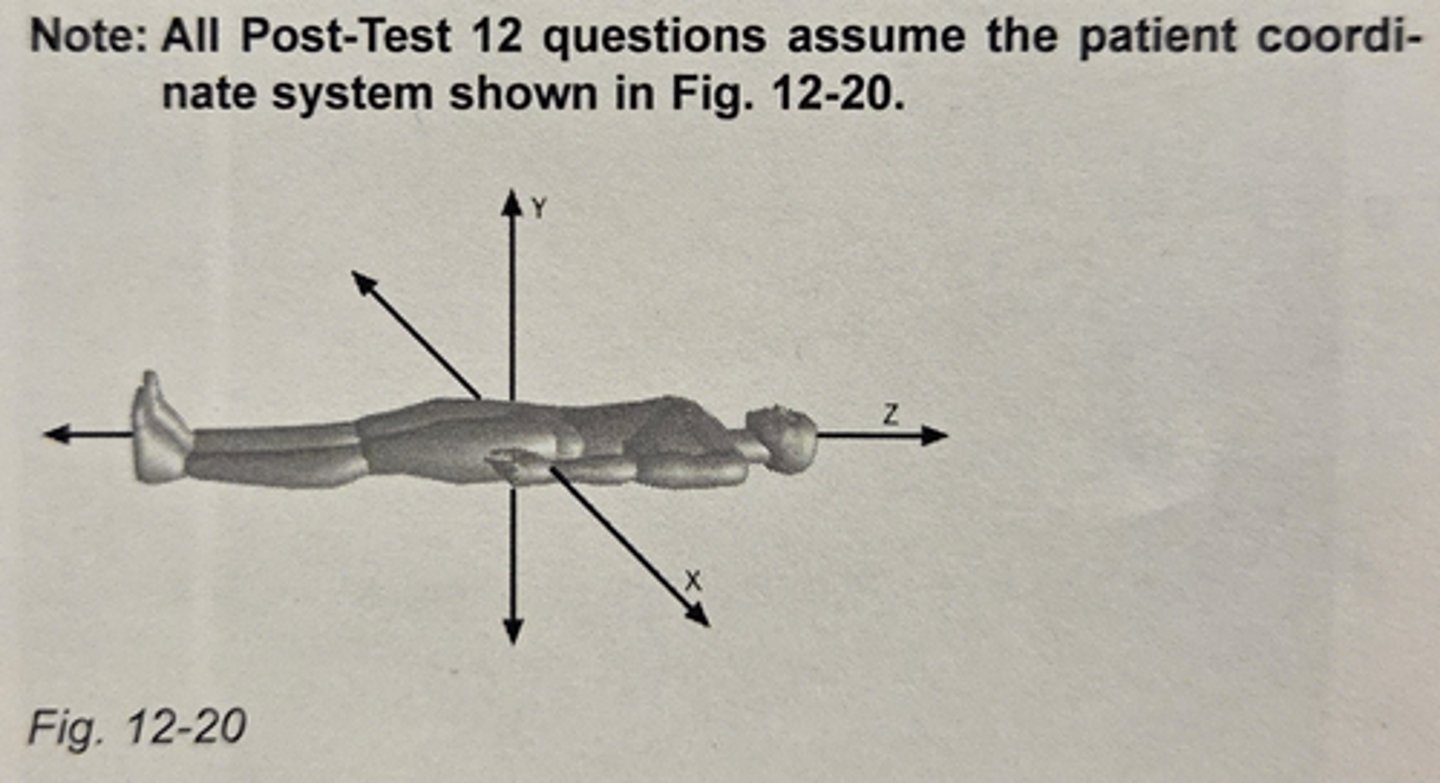
Which of the following is TRUE regarding truncation artifacts?
1. they are apparent when a high contrast border falls within a single pixel
2. they are reduced by applying a rawdata filter
3. they are reduced by using a high value for the image
1, 2 & 3
3 multiple choice options
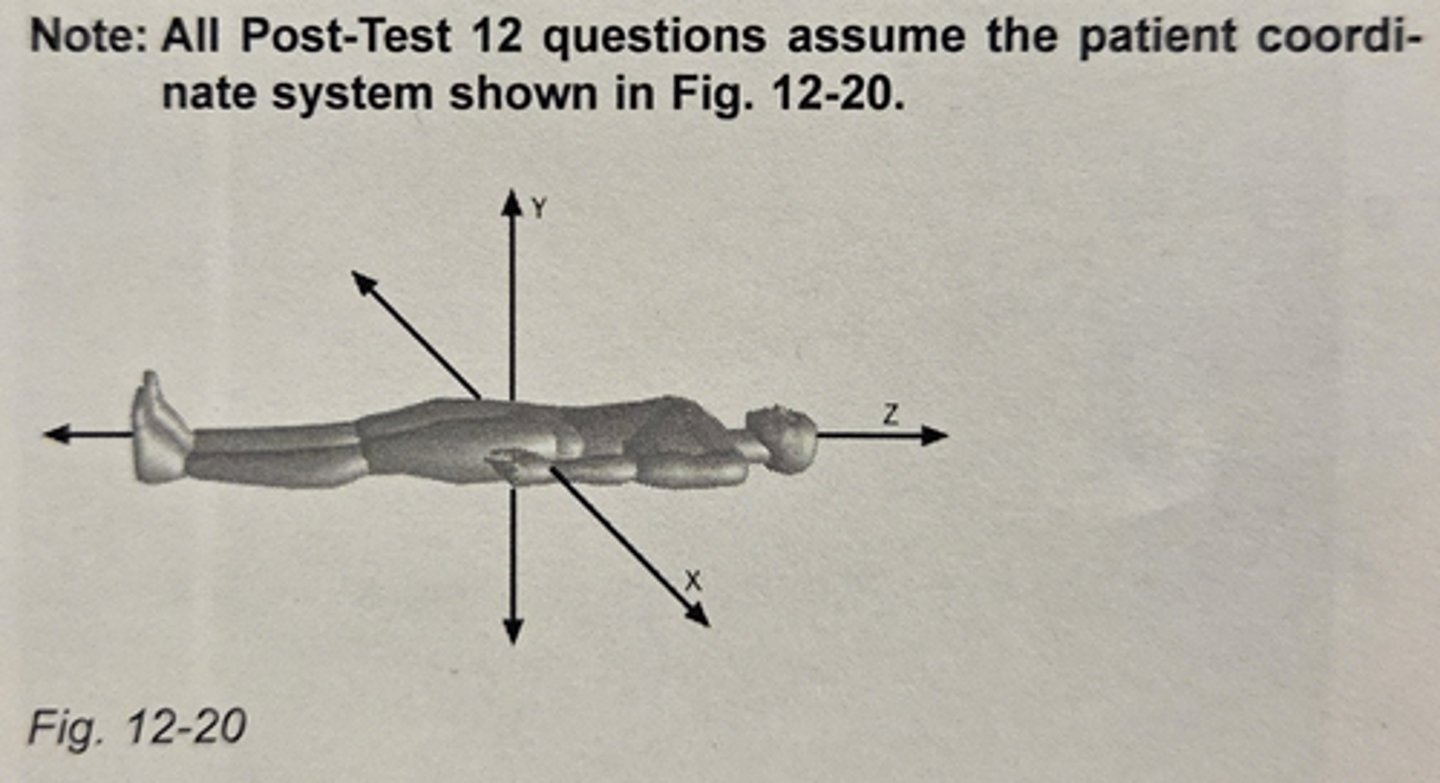
A chemical shift artifact will appear in the:
frequency encoding direction
3 multiple choice options
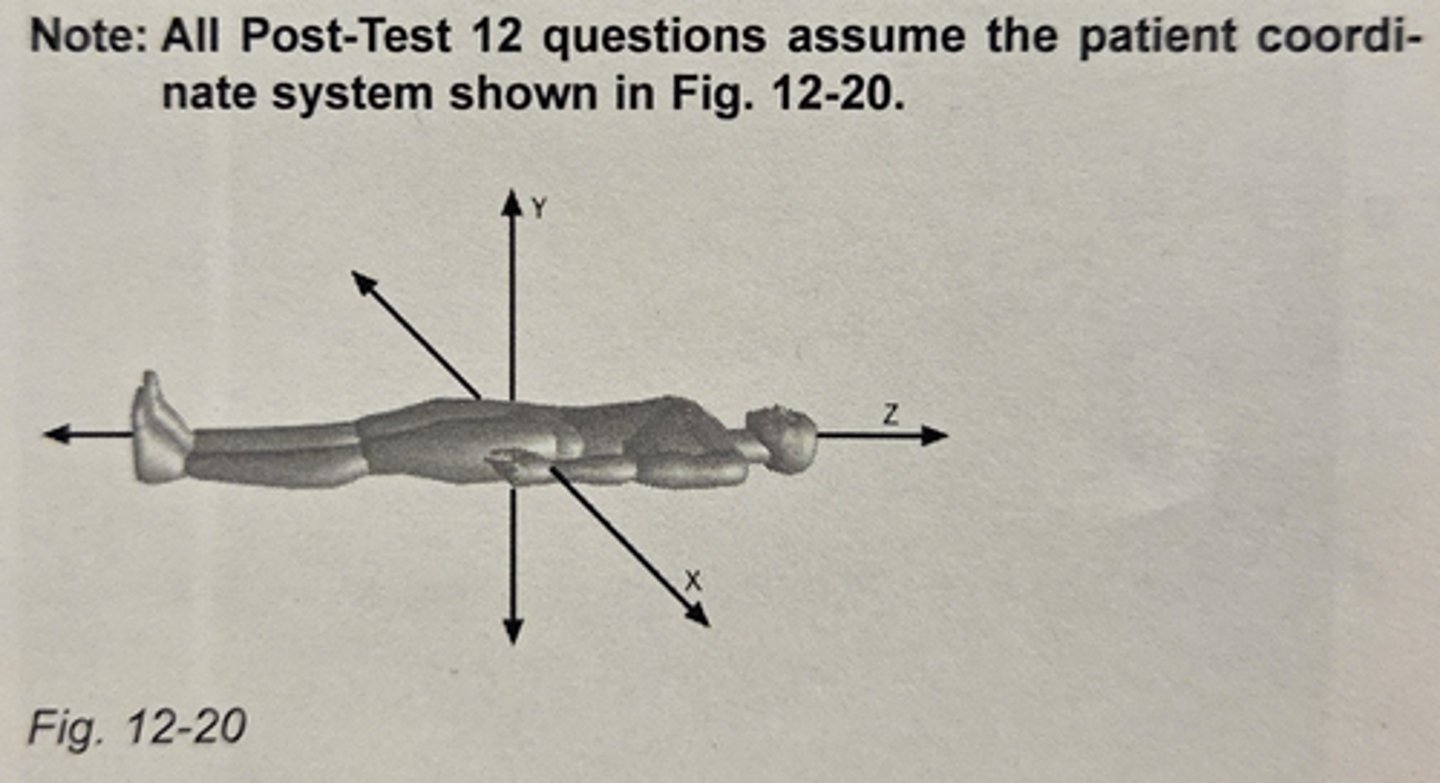
An artifact caused by respiratory motion will appear in the:
phase encoding direction
3 multiple choice options
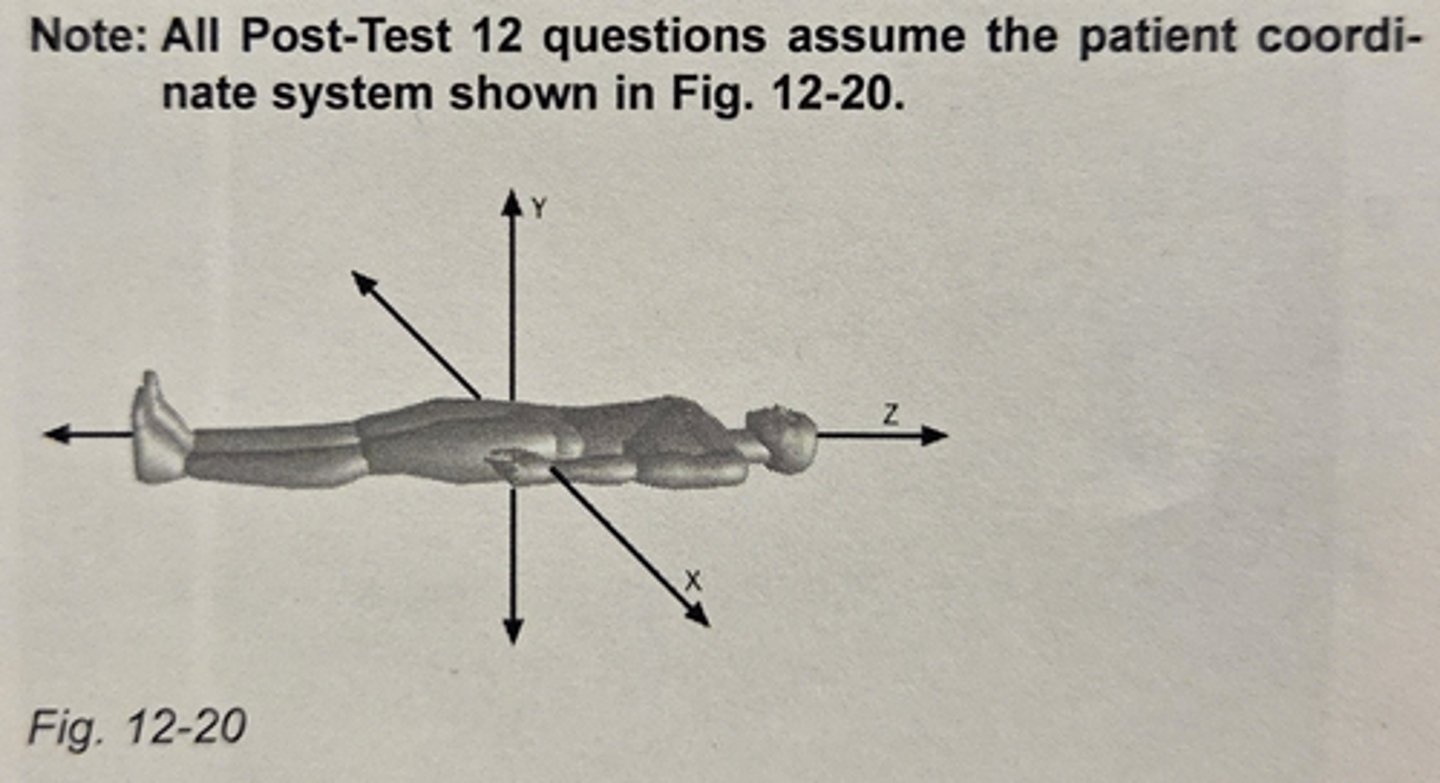
Which of the following is FALSE regarding Gibbs artifacts?
they are the same as the truncation artifacts
3 multiple choice options
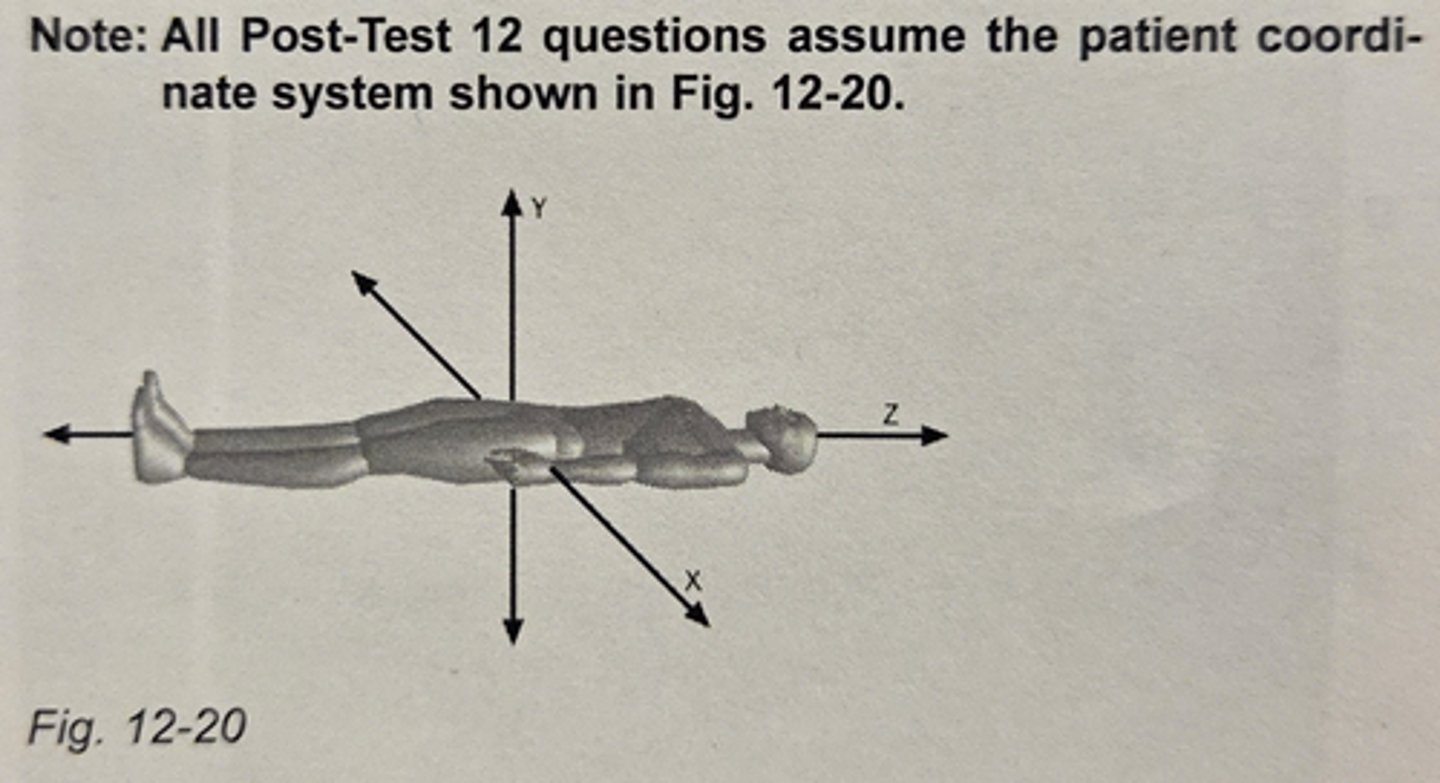
The frequency encoding direction in the image in Fig. 12-25 is:
horizontal
3 multiple choice options
_______________ would be most effective at reducing the artifact depicted in Fig. 12-25.
ECG triggering
3 multiple choice options
Which of the following strategies acts to reduce motion artifacts?
applying a rawdata filter
3 multiple choice options
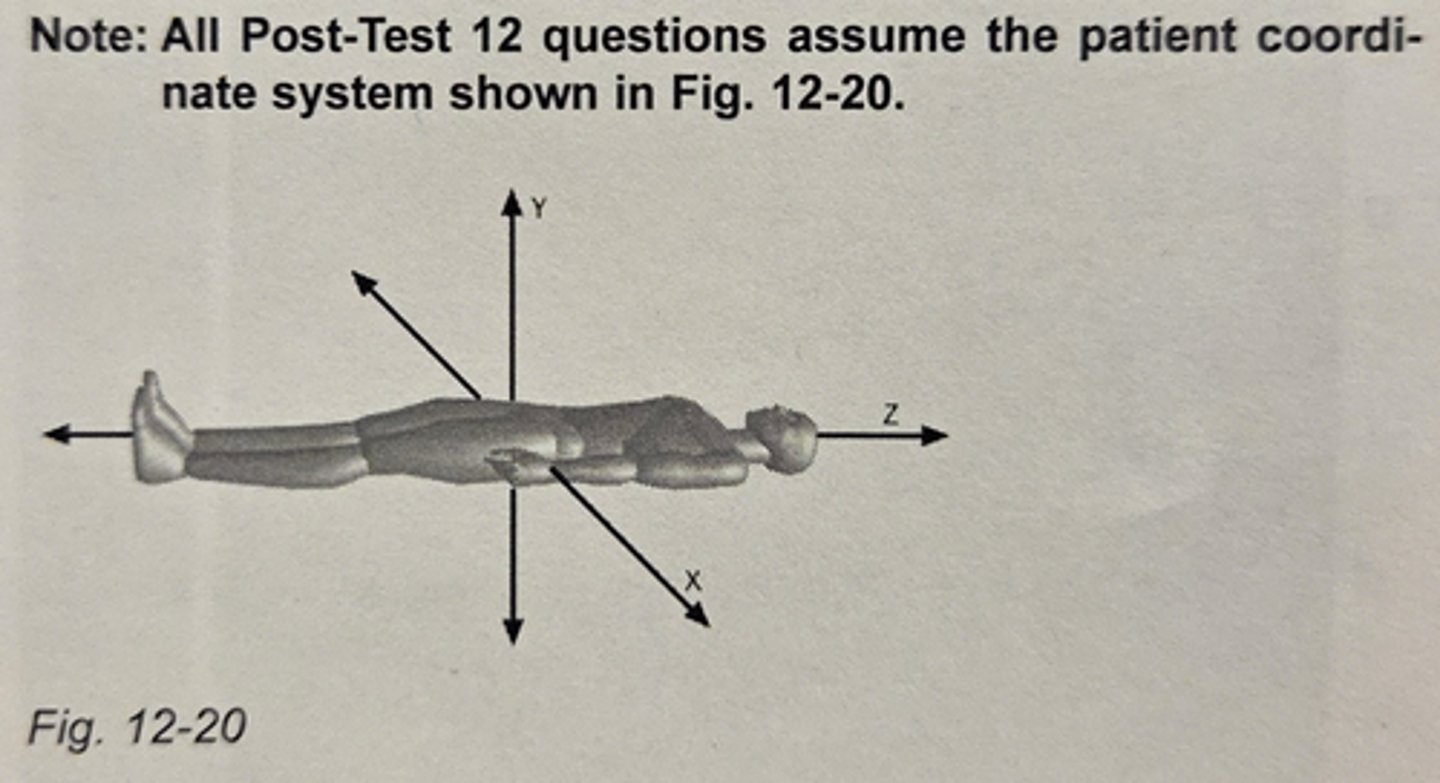
____________________ will reduce or eliminate the artifact in the image in Fig. 12-26.
Properly using RF shielding
3 multiple choice options
The line running through the image in Fig. 12-26 represents _______________ artifact.
RF
3 multiple choice options
The readout direction in Fig. 12-26 is:
horizontal
3 multiple choice options
A partial volume artifact is caused by:
using slices that are too thick for the structures that need to be depicted
3 multiple choice options
